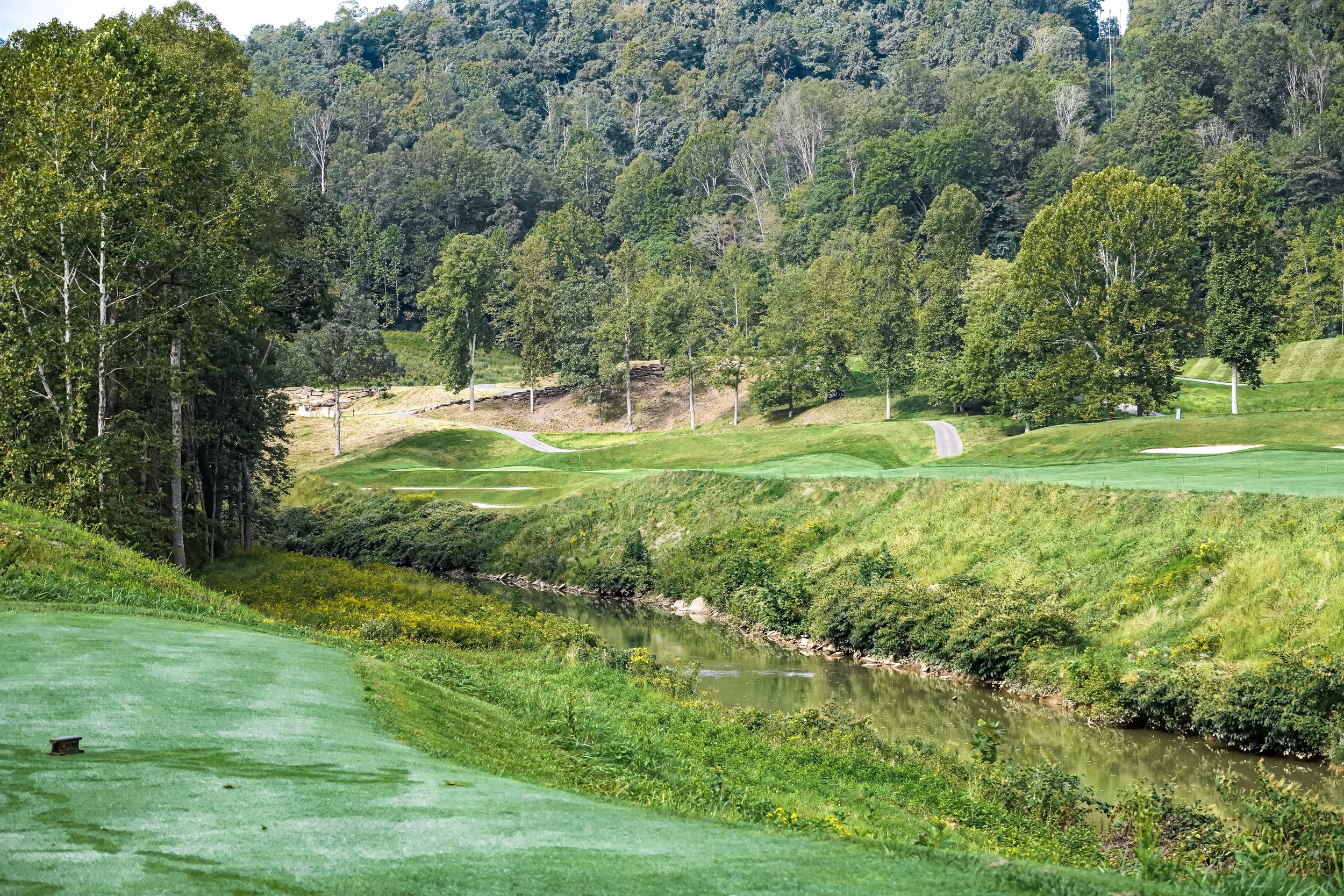#64 - Dye-abolical
Fresh off an incredible morning at Pikewood National, the Gritty boys ventured to the nearby Pete Dye Golf Club. One of Dye's greatest modern designs, Pete Dye Golf Club is nestled in the mountains of West Virginia. What was once a coal mine, this modern golf gem challenges golfers of all skill levels. After being humbled by Pikewood earlier, the boys were ready to seek revenge on another West Virginia track. Some succeeded in this goal. I, as is tradition, did not. However,the round was incredible nonetheless.
The drive in was spectacular. Our host, Justin, patiently awaited our arrival and was ready to showcase his home track. As we loaded our bags onto the carts, we could tell we were in for a treat. Water was in play often, the rolling landscape called for precise shot-making, and the greens were challenging. We quickly teed off on the dogleg-left first hole, and the round was underway. The first tee shot was a fair introduction to the course. There was trouble left, but overall this downhill hole eased us into Pete Dye GC. We quickly finished up the first hole and headed to the second.
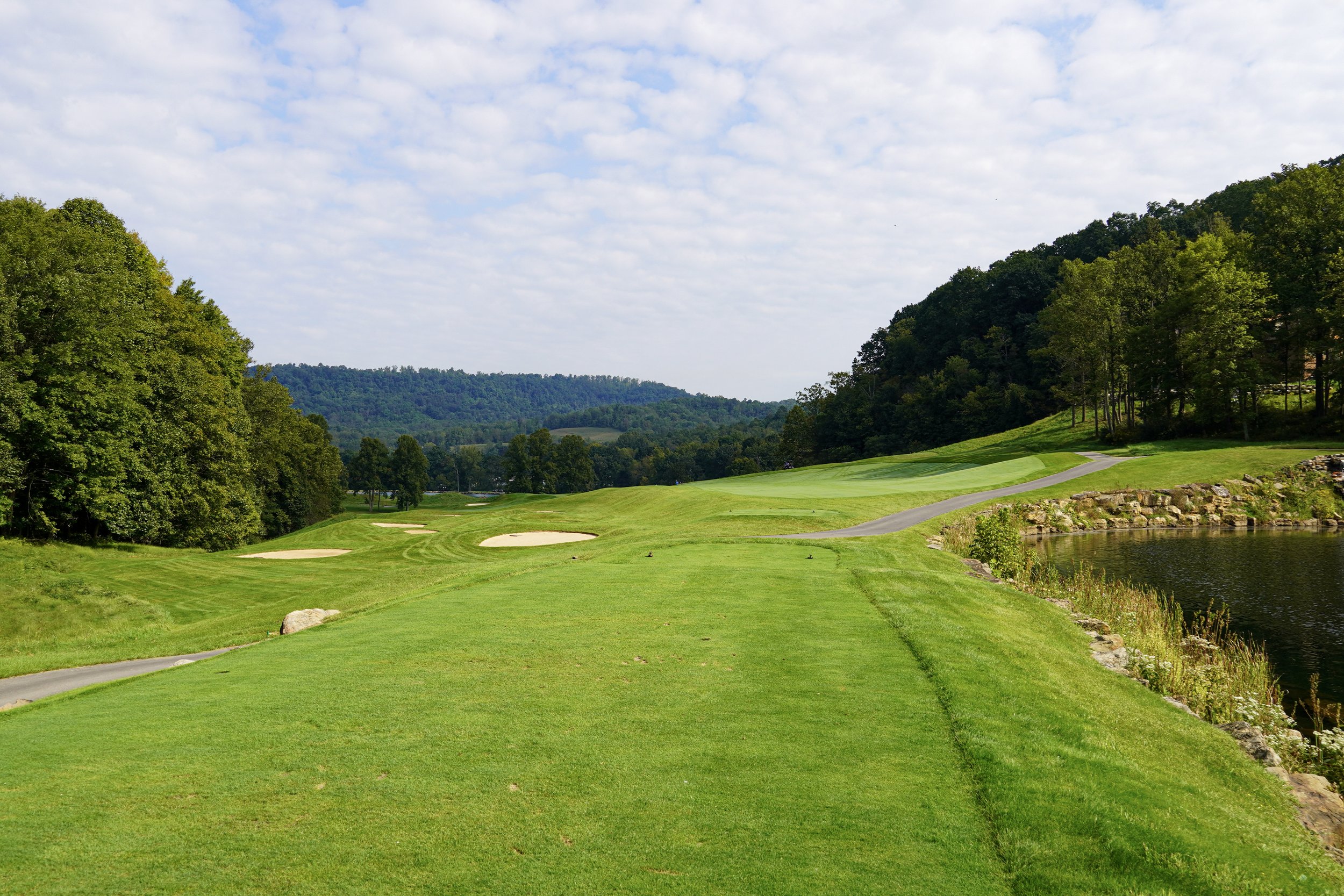
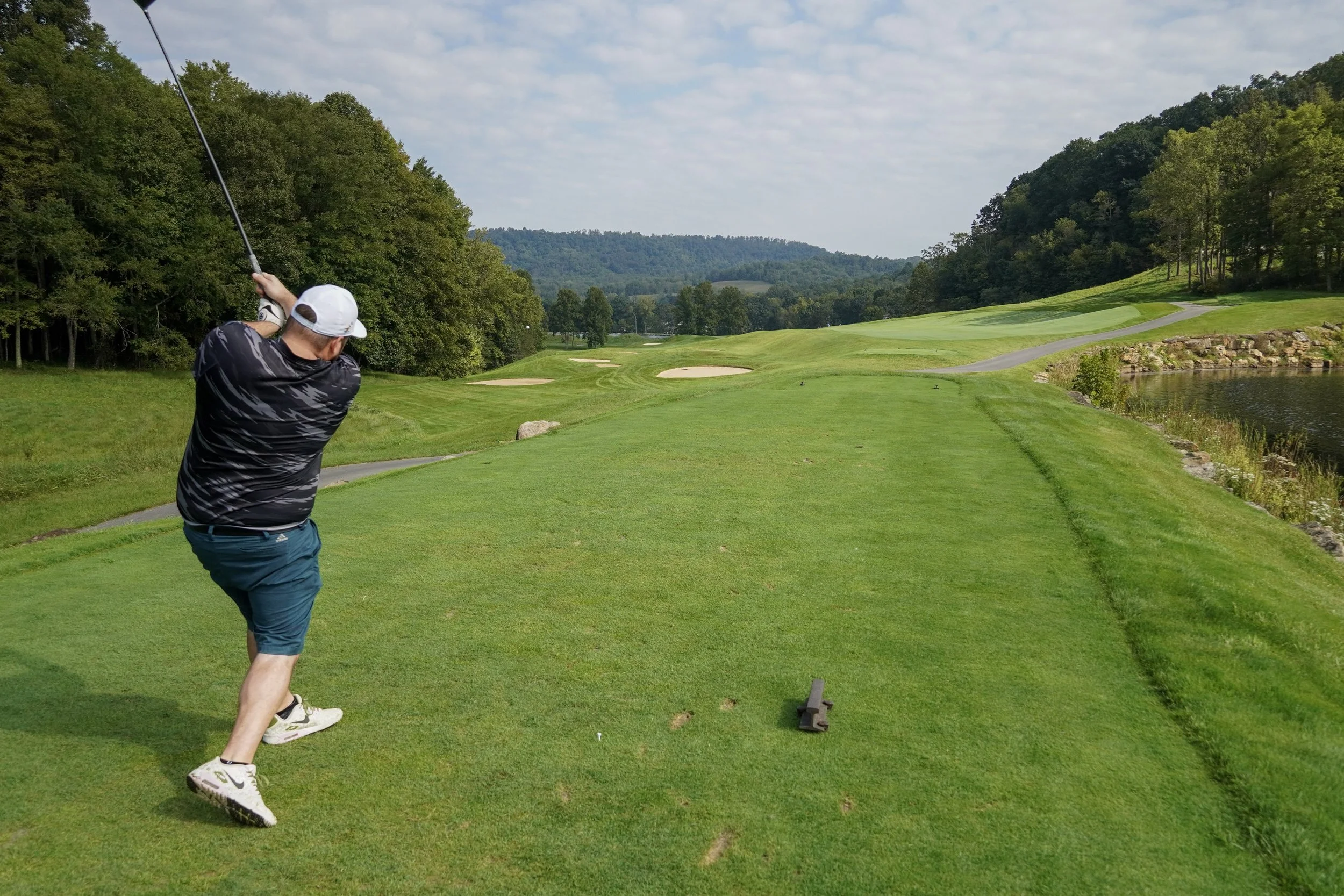
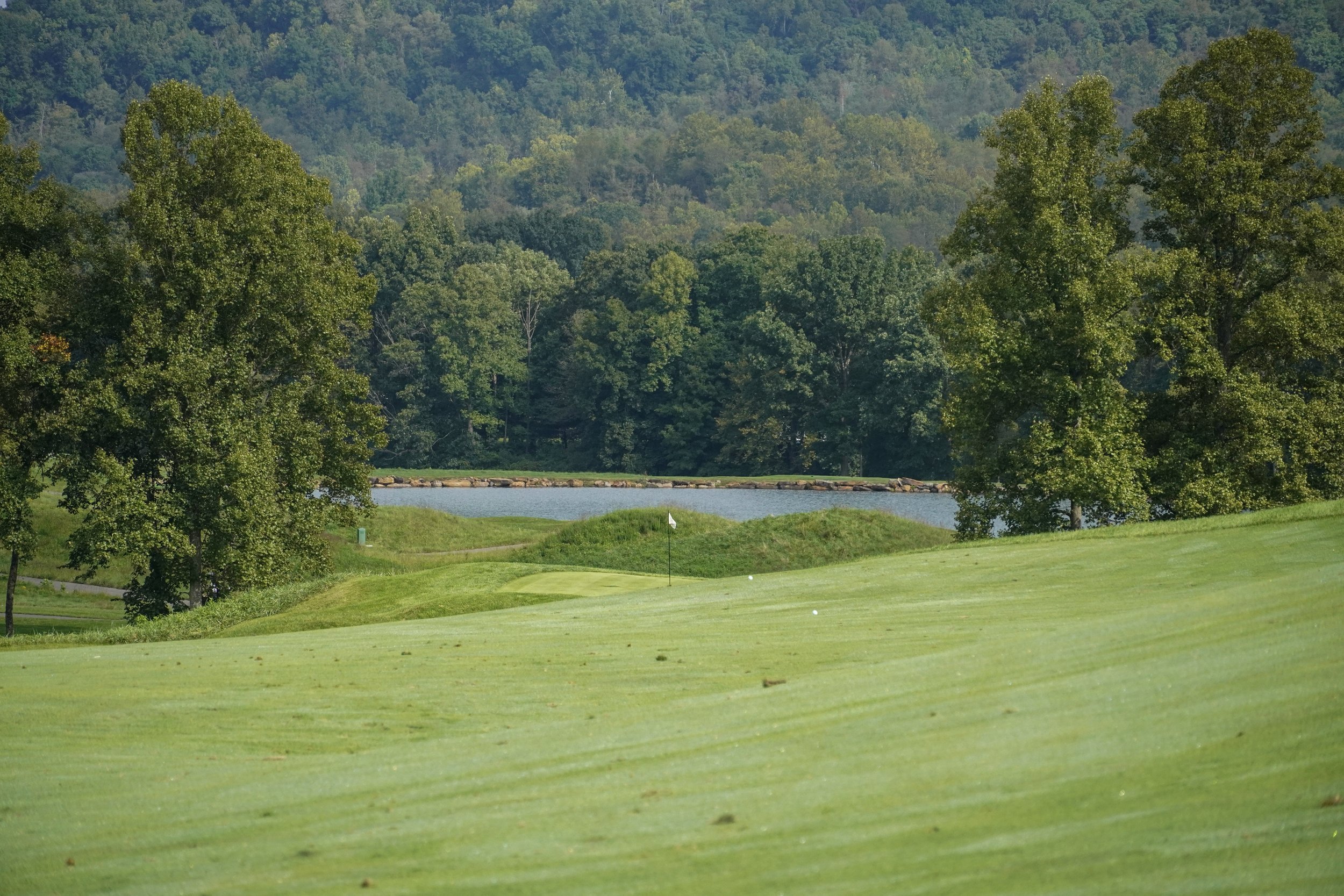

Here, for the first time, we encountered the true challenge of this course: a forced carry over water to a slanting fairway. The second hole tempted the player to cut off as little or as much as they desired. My fantastic decision-making led me to attempt too much, sending my shot to a watery grave. The rest of the crew used a more calculated approach and kept their shots in play. The #1 handicap hole showed its true colors as we were all challenged. Dye introduced the course's difficulty early. With the toughest hole out of the way, we all hoped for smooth sailing over the next 16 holes. We were wrong.
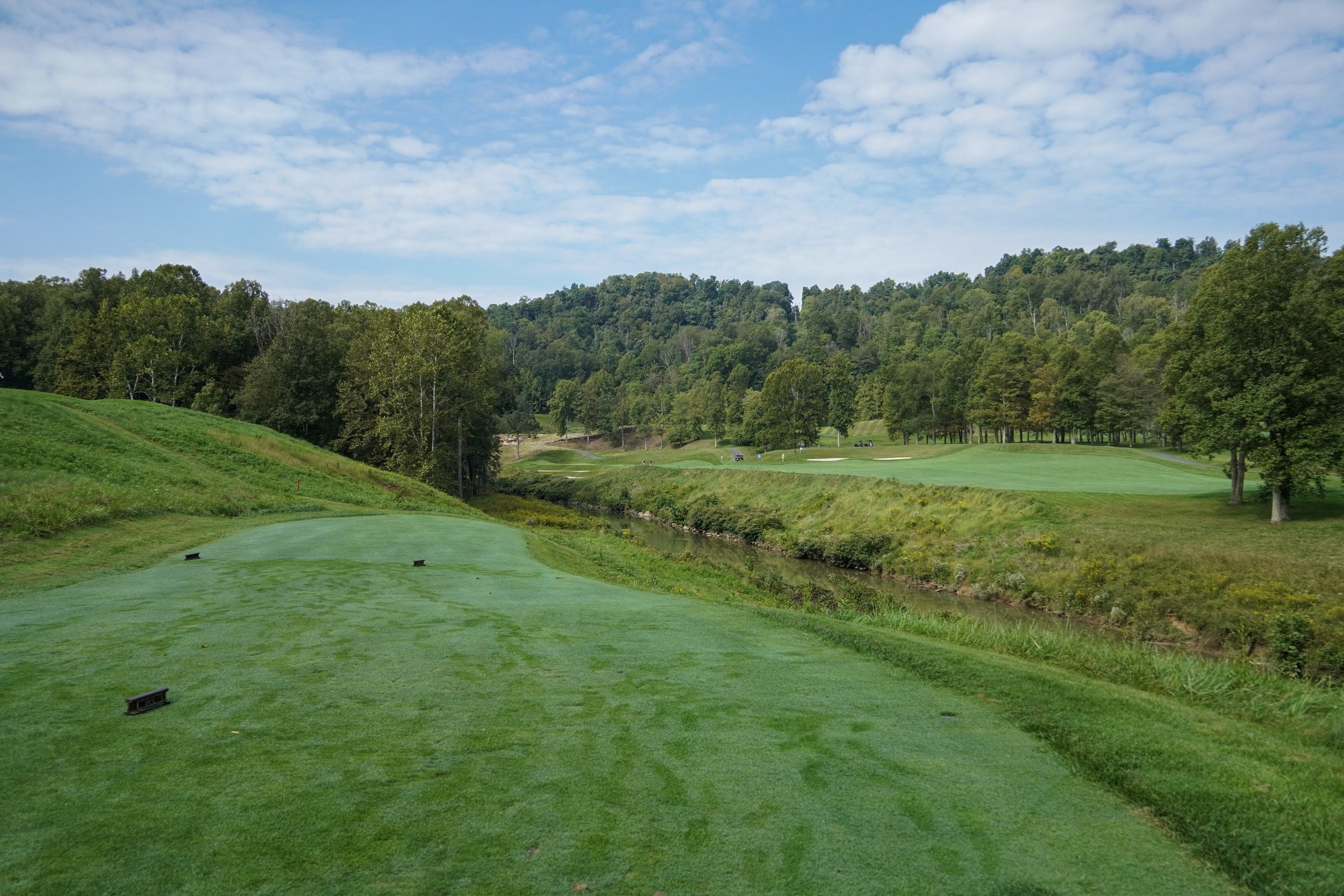
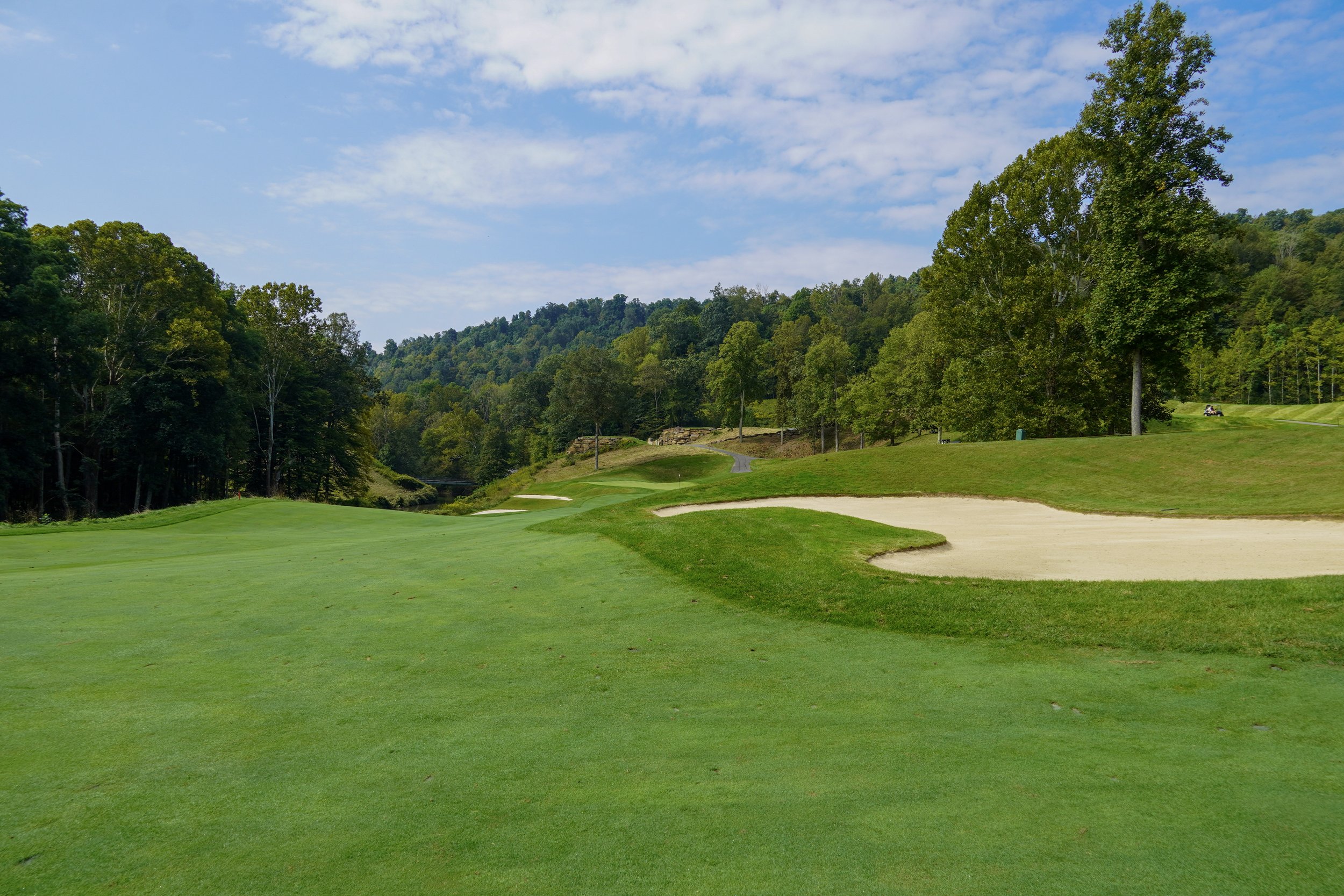
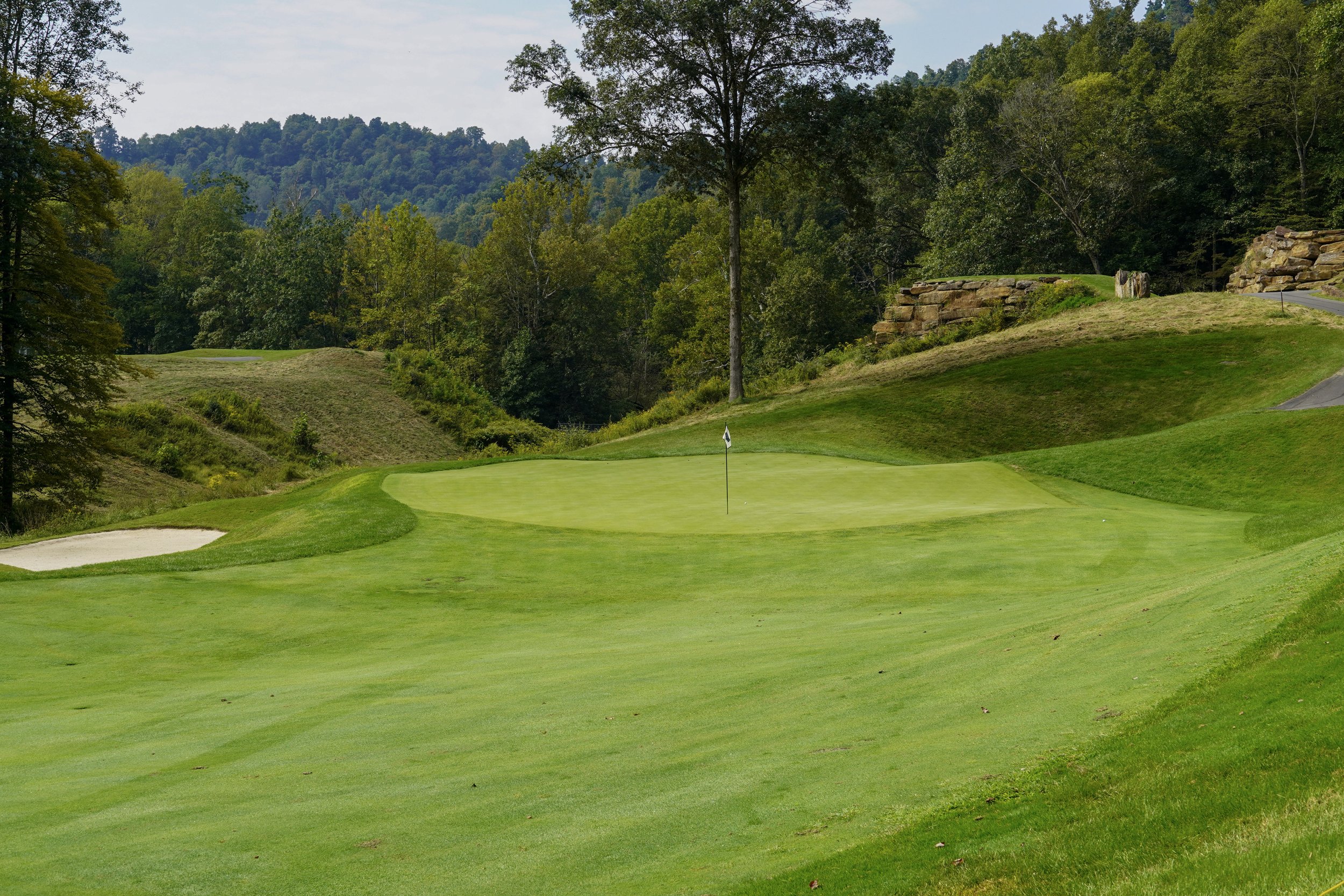
The third hole was a short par 4 with a well-guarded green. The group managed this hole nicely and headed to the par-3 fourth. The first par-3 was a challenge off the tee: a long shot over water to a pin tucked just over the rock wall. The safe play was to target the left portion of the green, but where's the fun in playing it safe? We all took dead aim at the challenging pin location. The first par-5 was stunning—a long, winding hole that zigzagged down the river to another guarded green. I found myself in the bunkers along the water, while the rest of the group managed to stay in play.
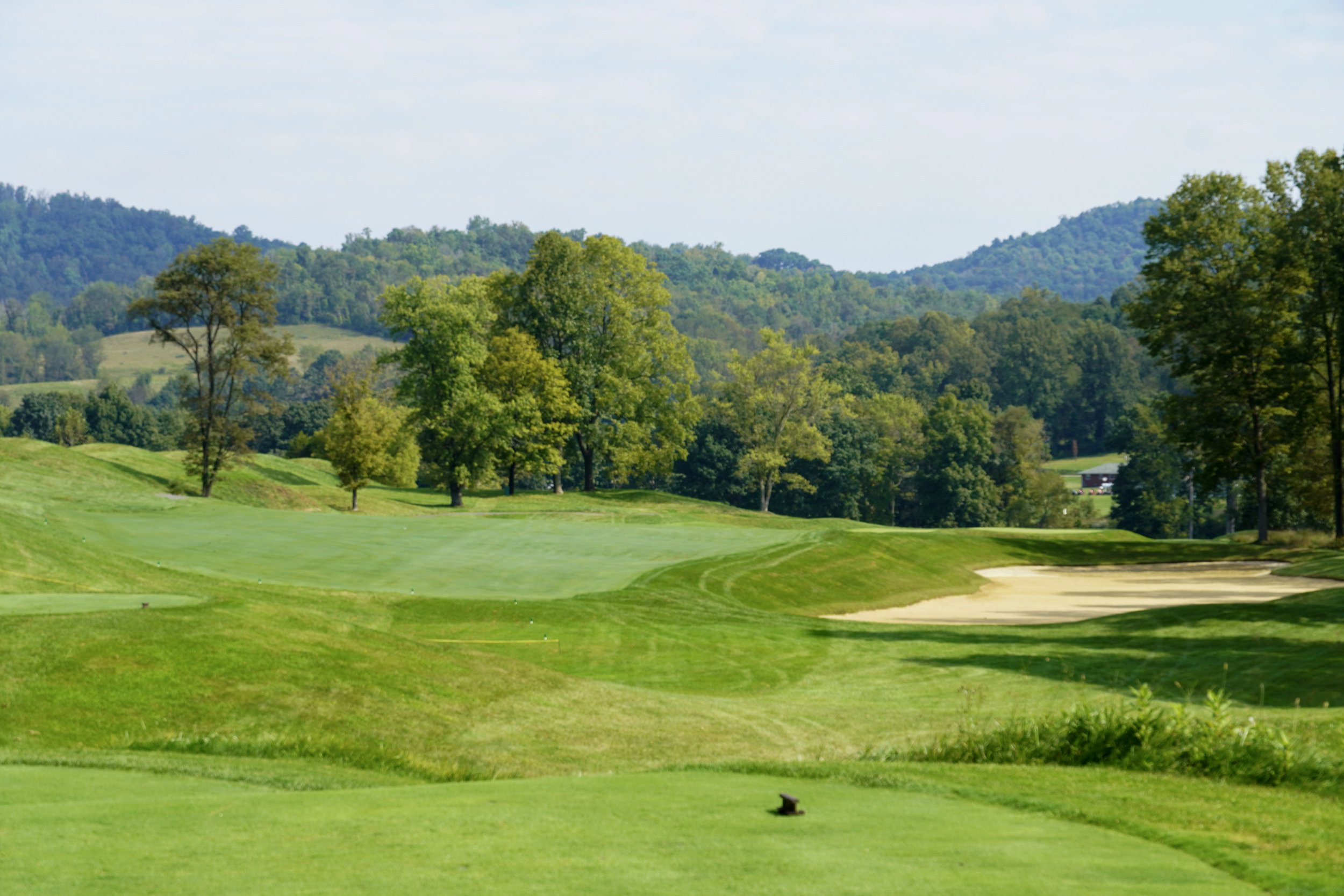
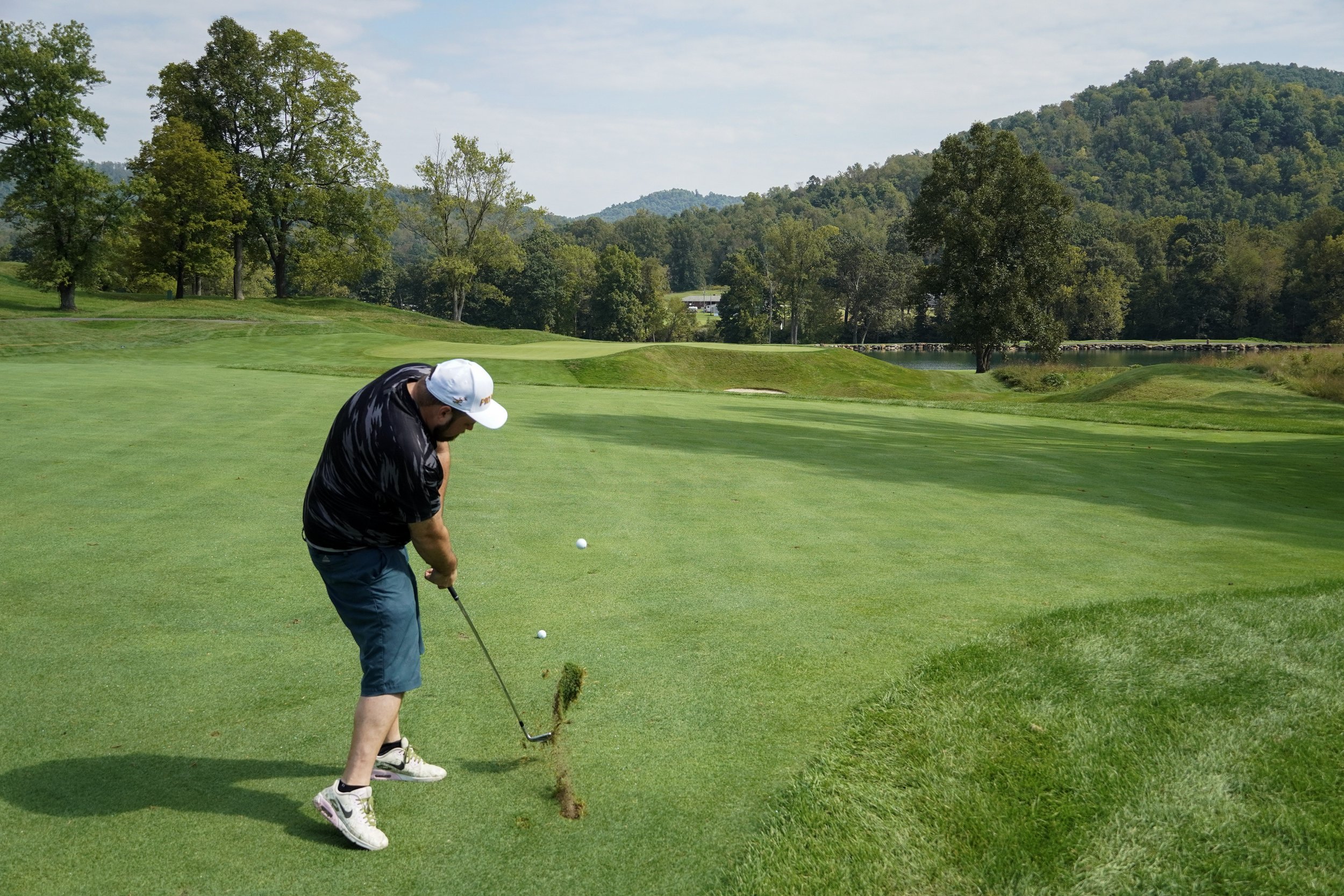
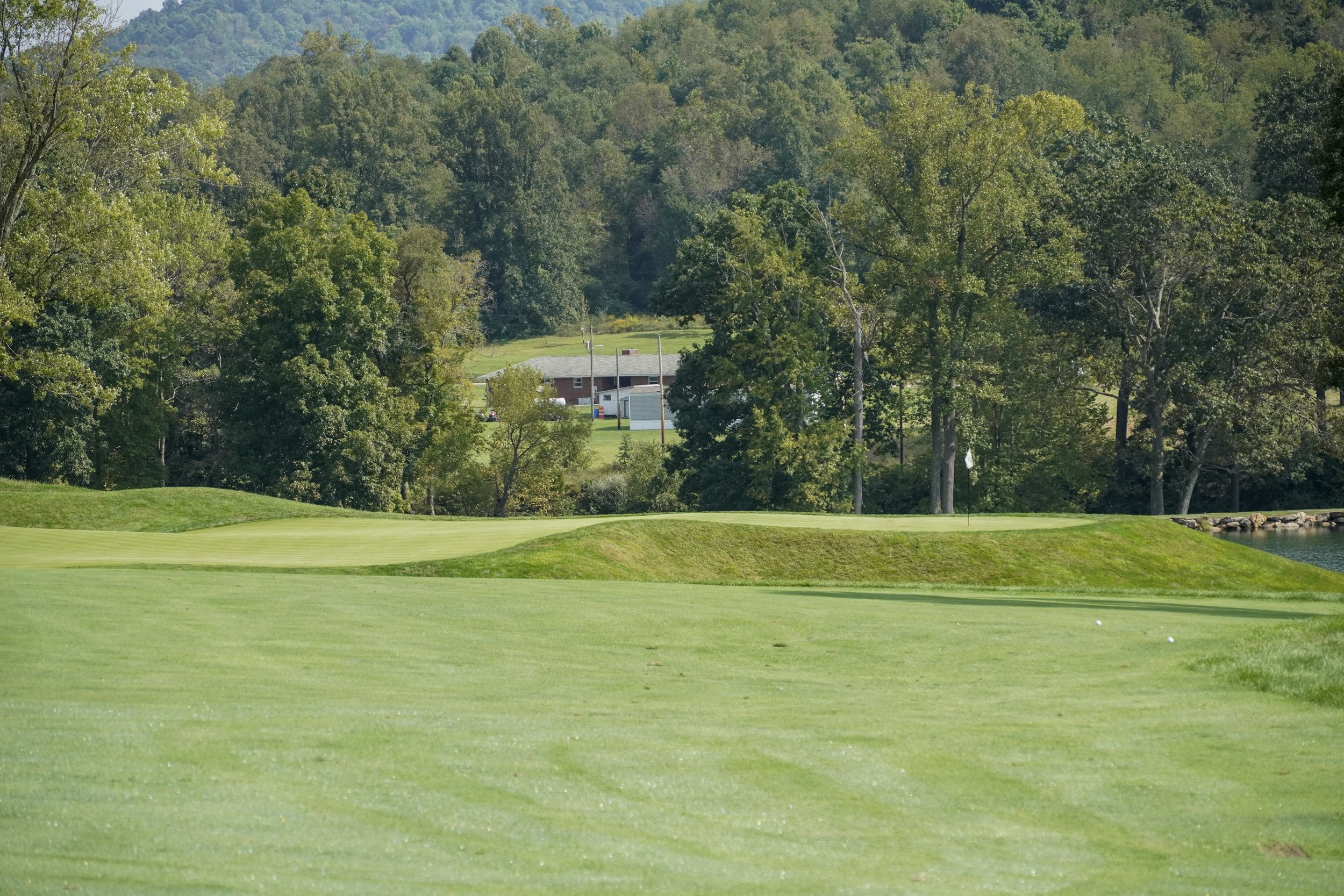
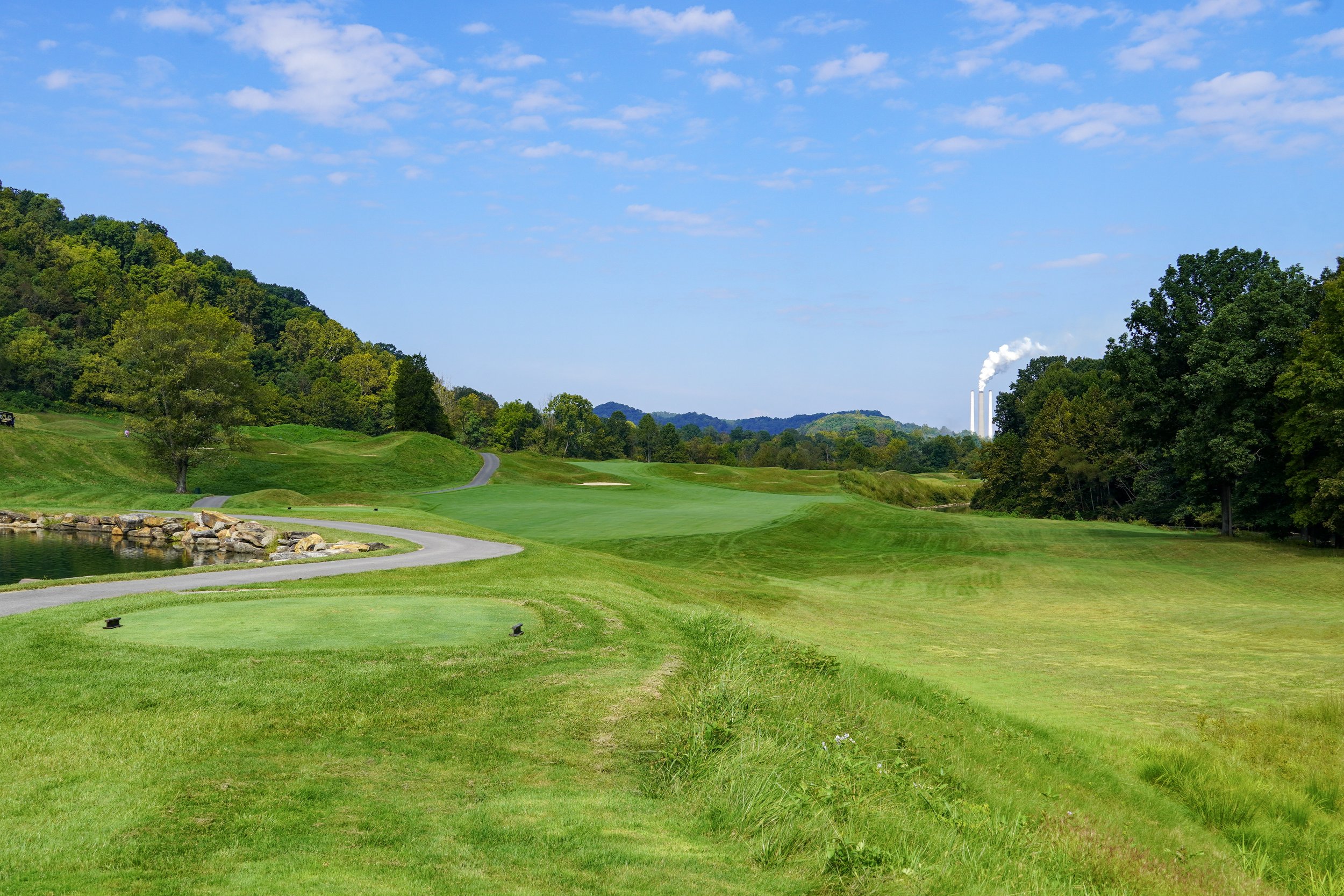
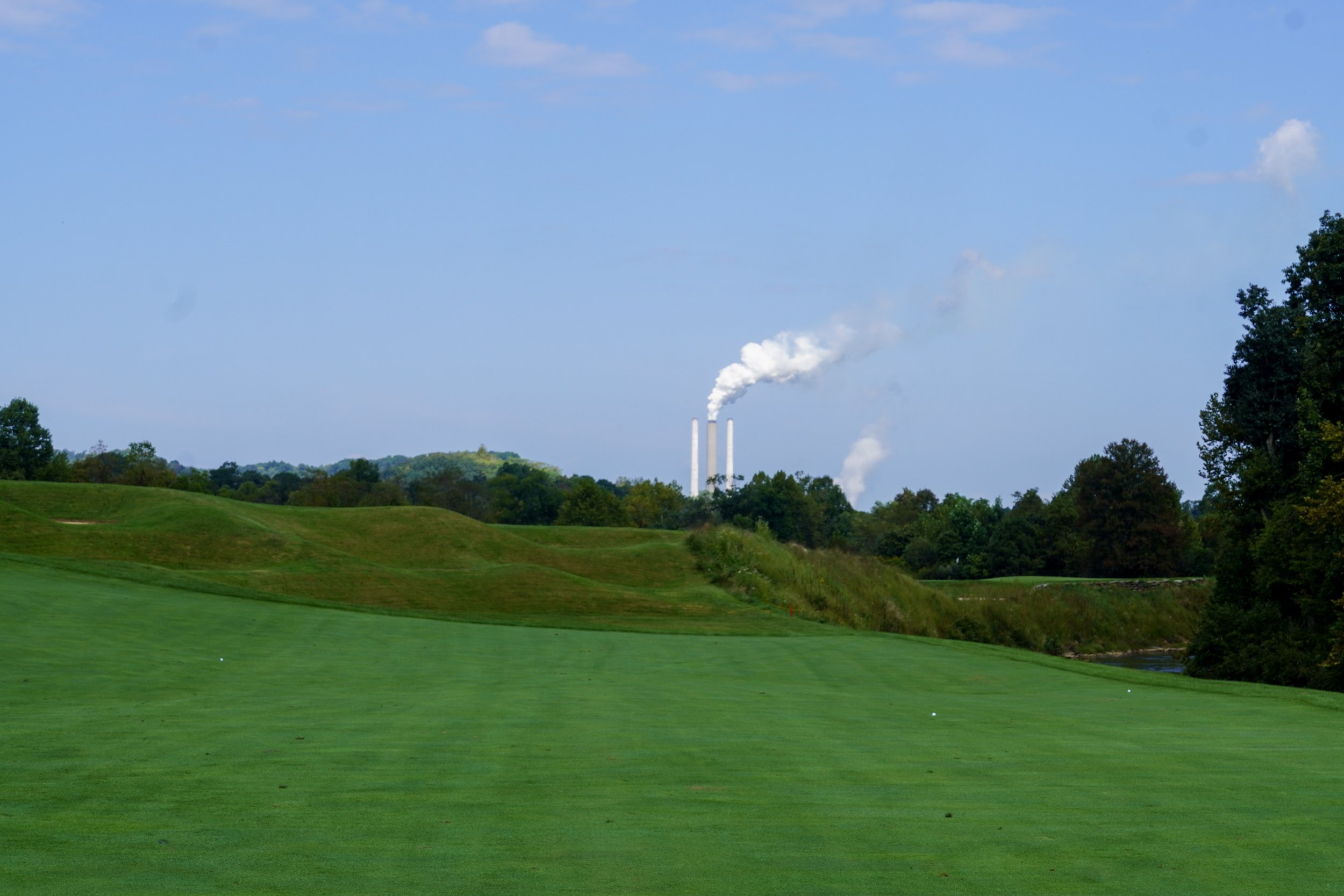
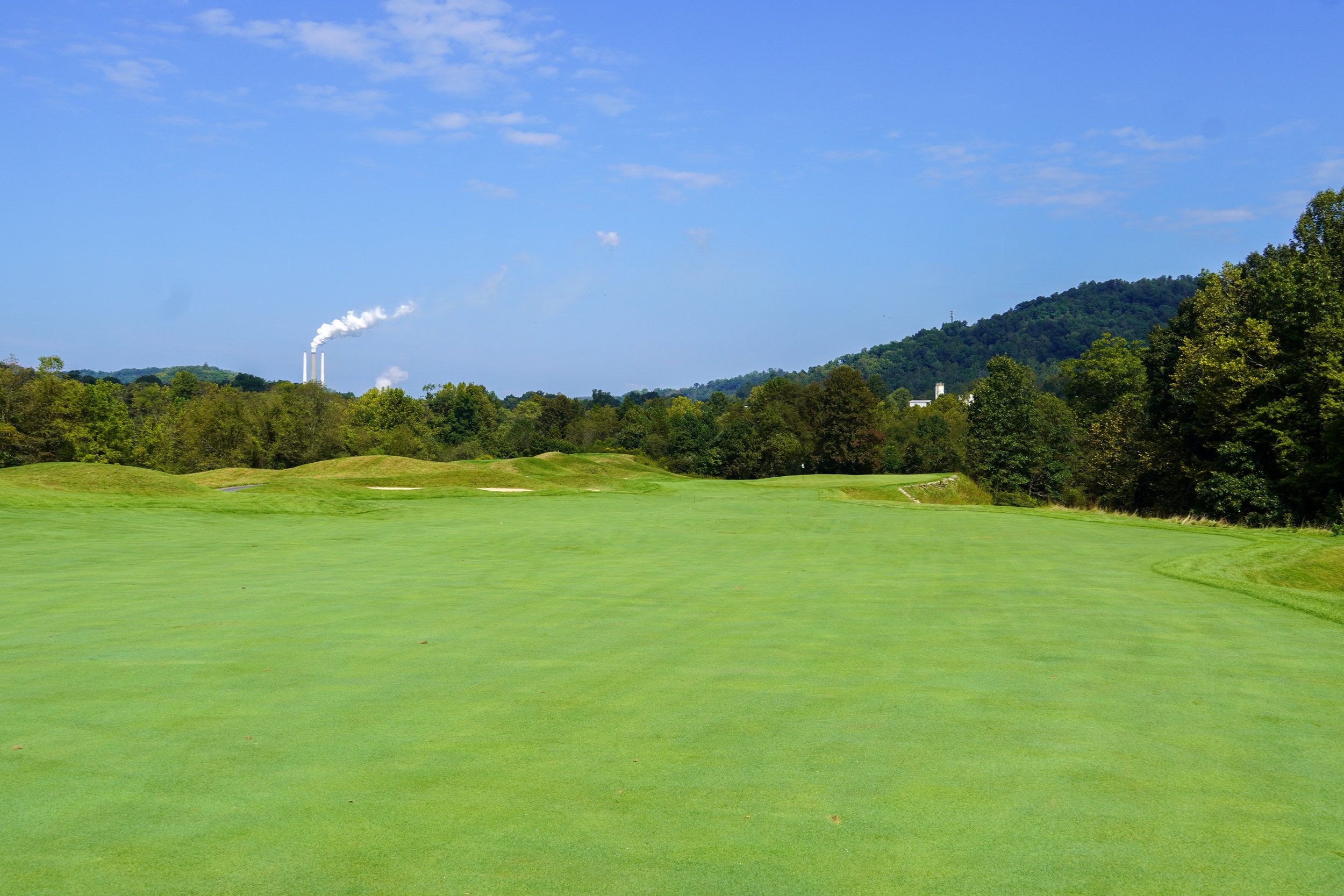
The par-4 sixth followed another creek, ending at the Pinnickinnick Mine. This mine, opened in the early 1800s, was reopened in 2015 as a unique way to connect the sixth and seventh holes. After driving through the mine, we found ourselves on the par-3 seventh. This elevated tee box gave the group another incredible photo opportunity and a much-needed, routine150-yard par-3.
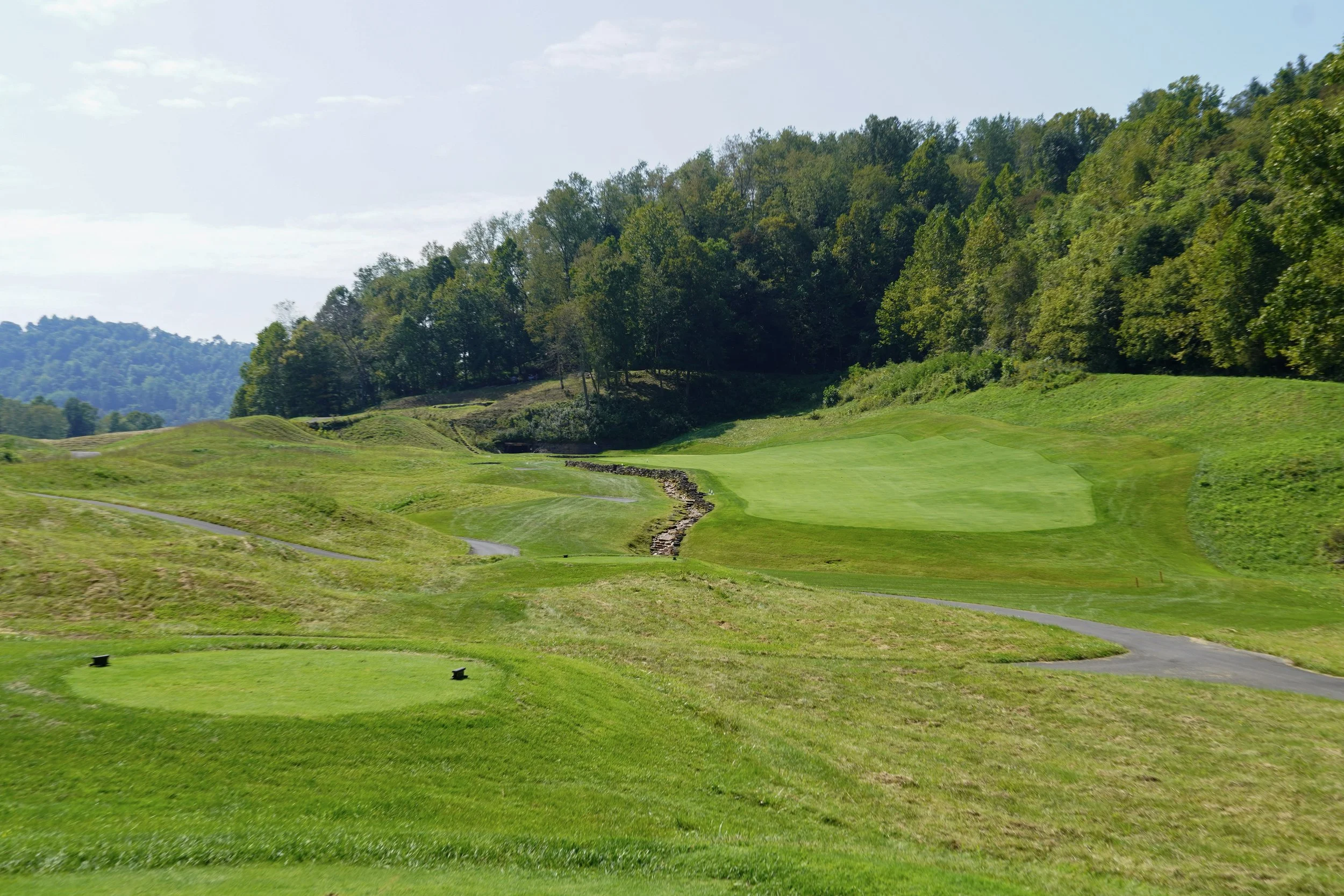
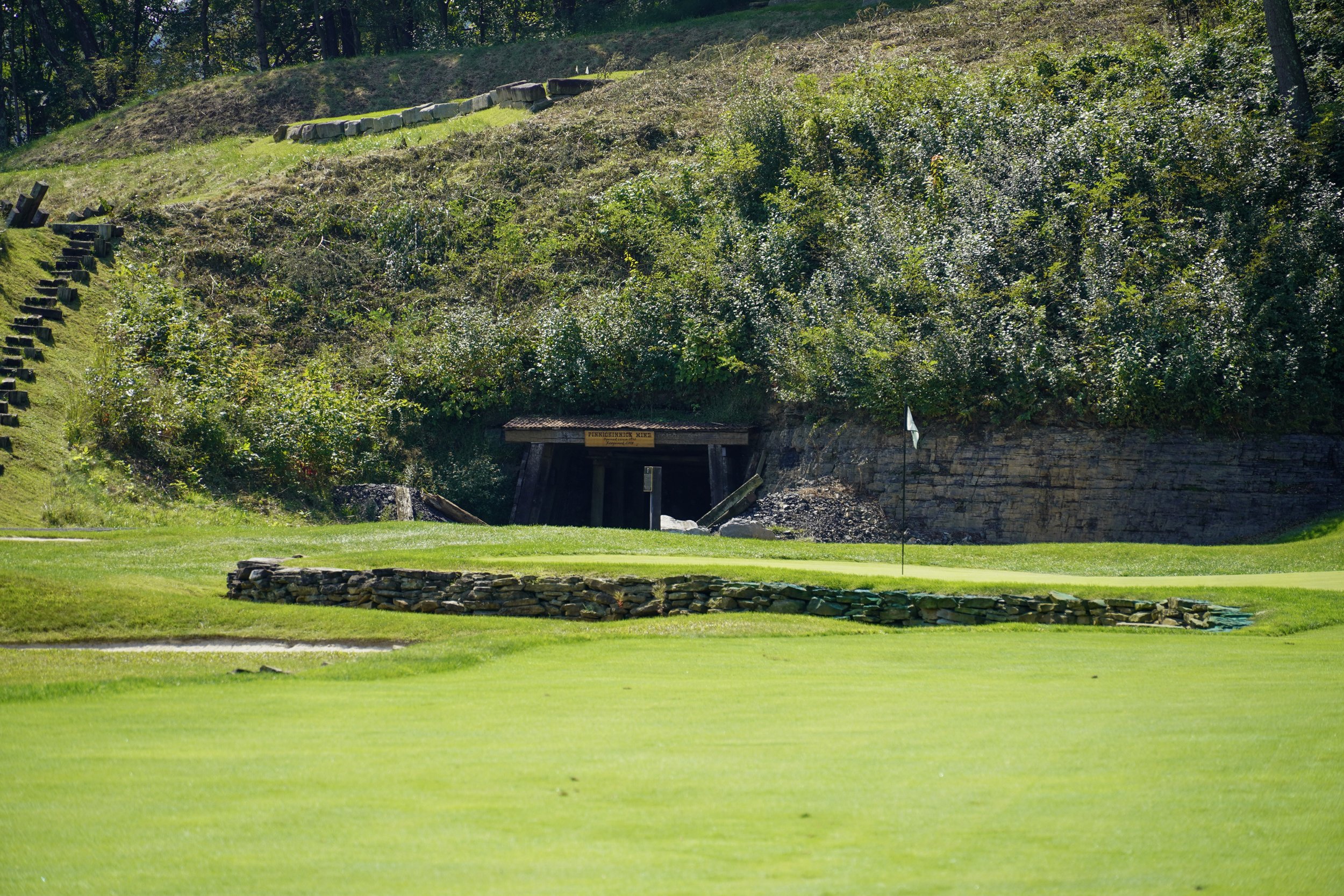
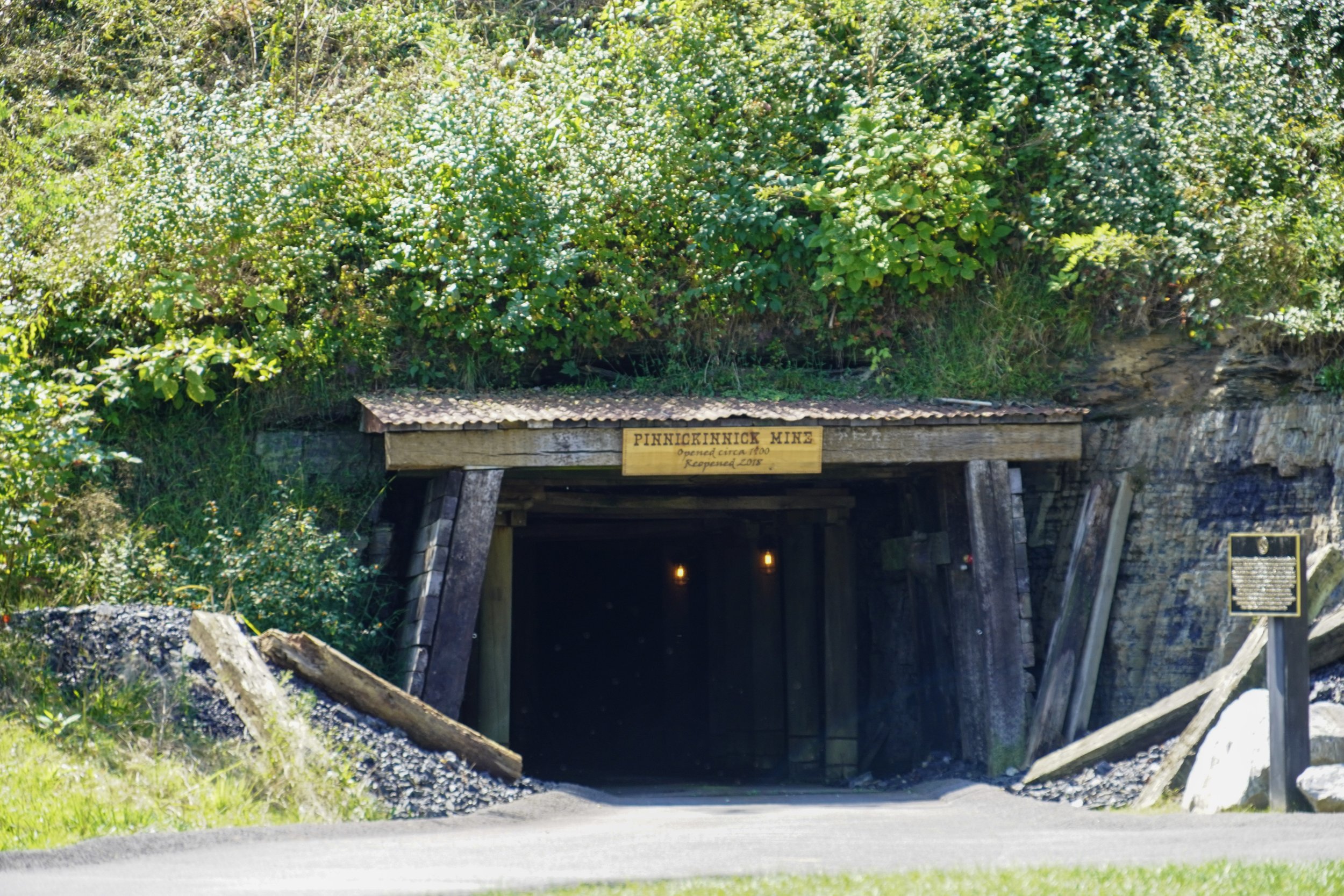
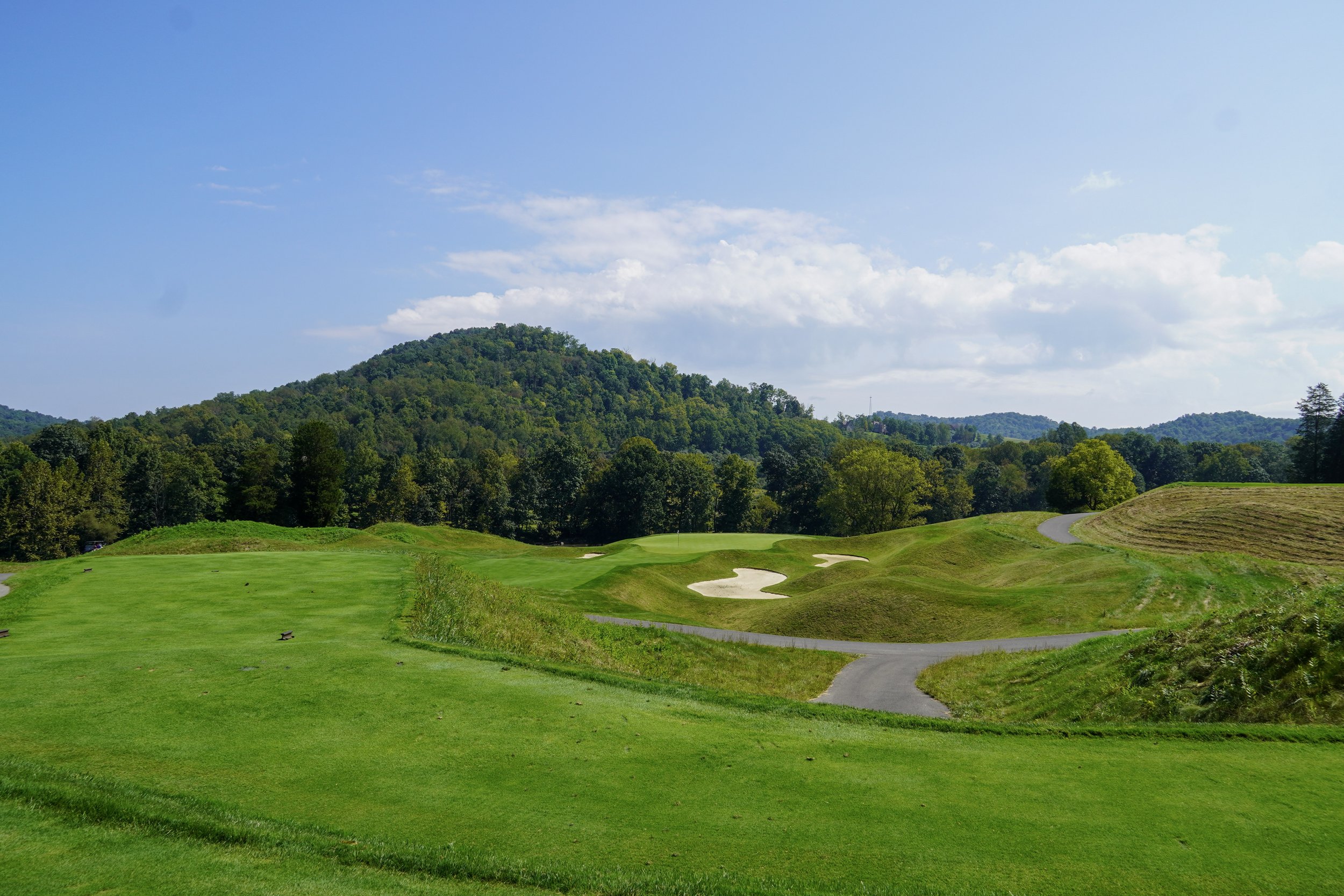
The eighth, a downhill par-5, and the par-4 ninth were holes that required accuracy. With no real danger, playing it safe was the key to finishing the challenging front nine on a good note.
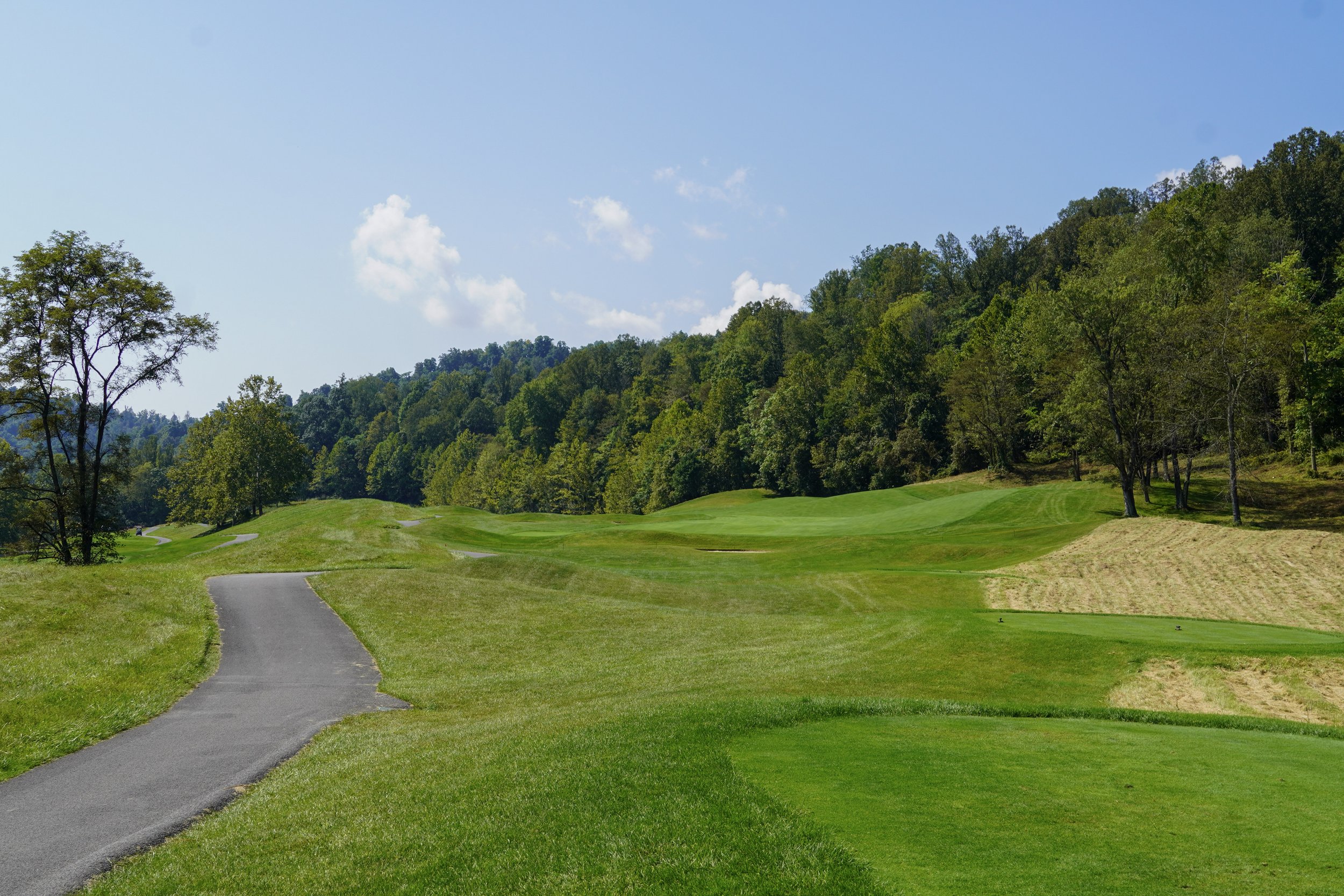
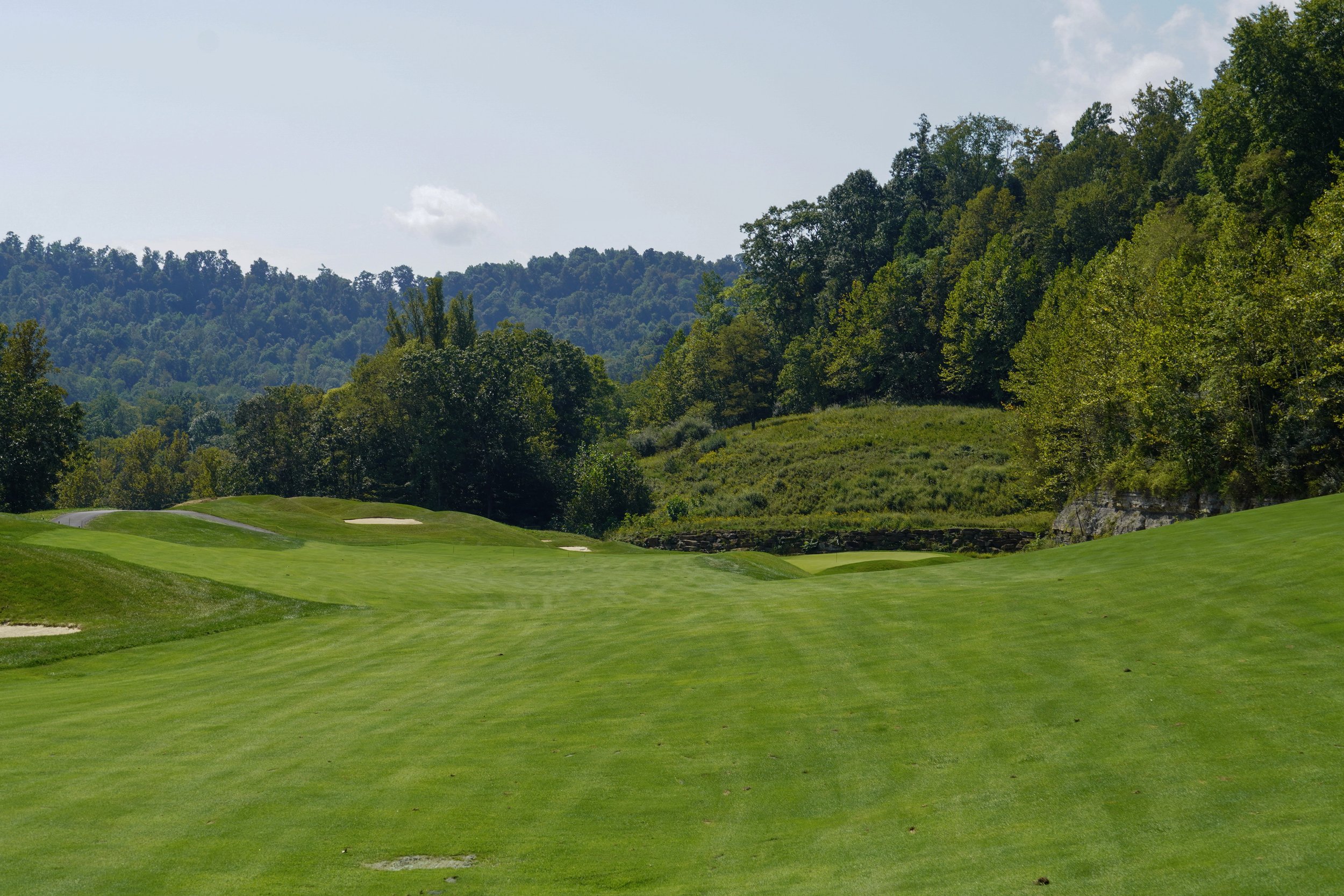
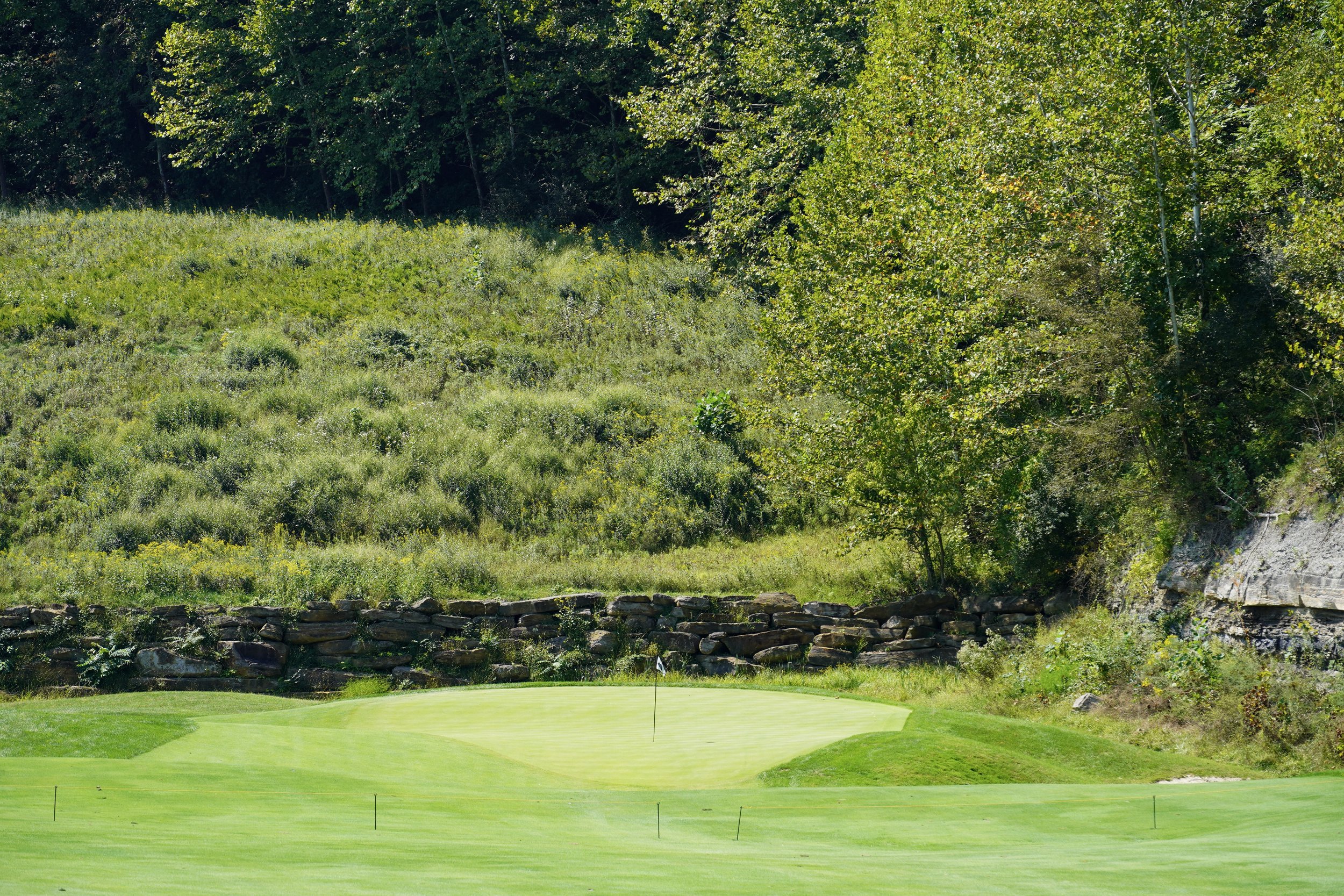
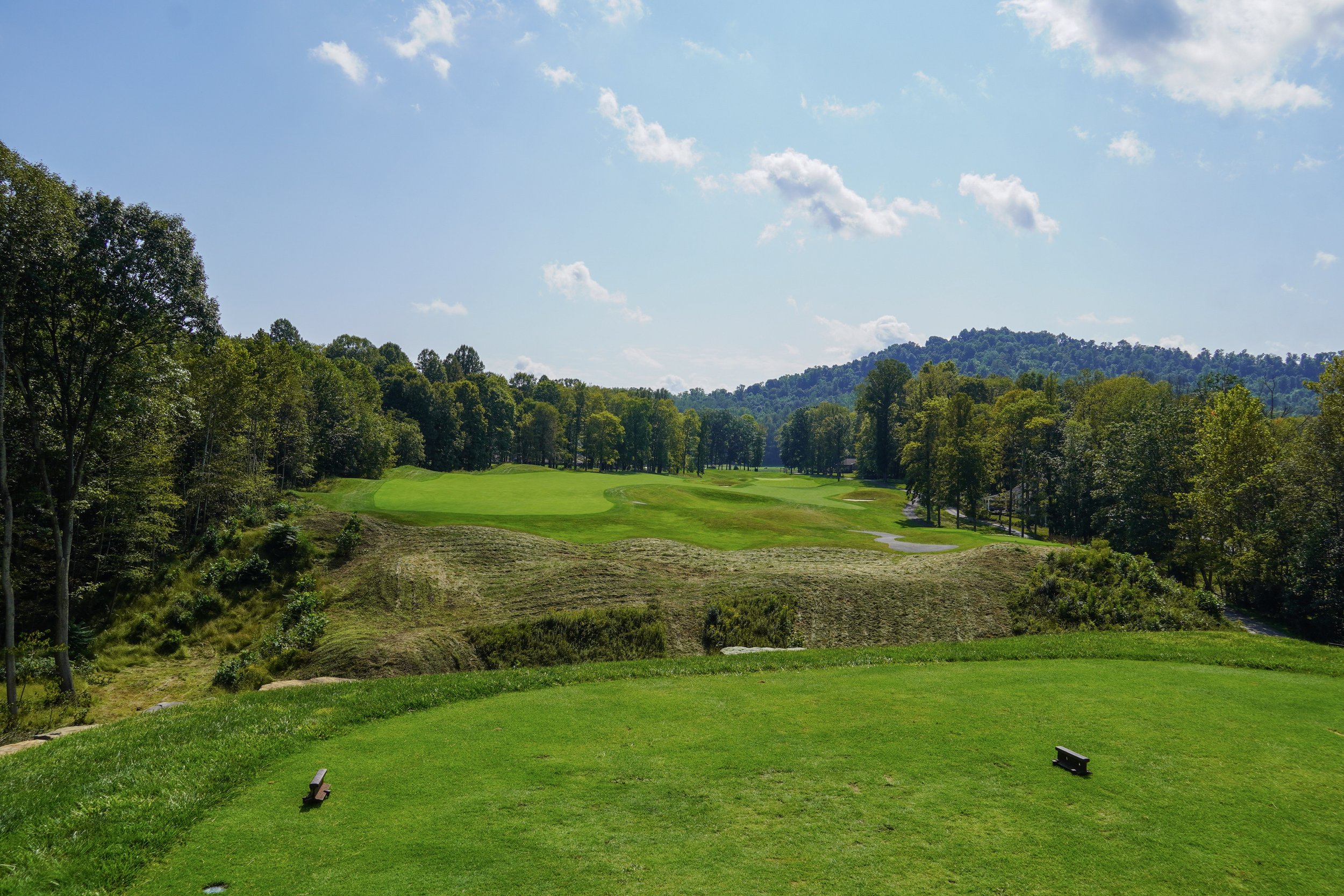
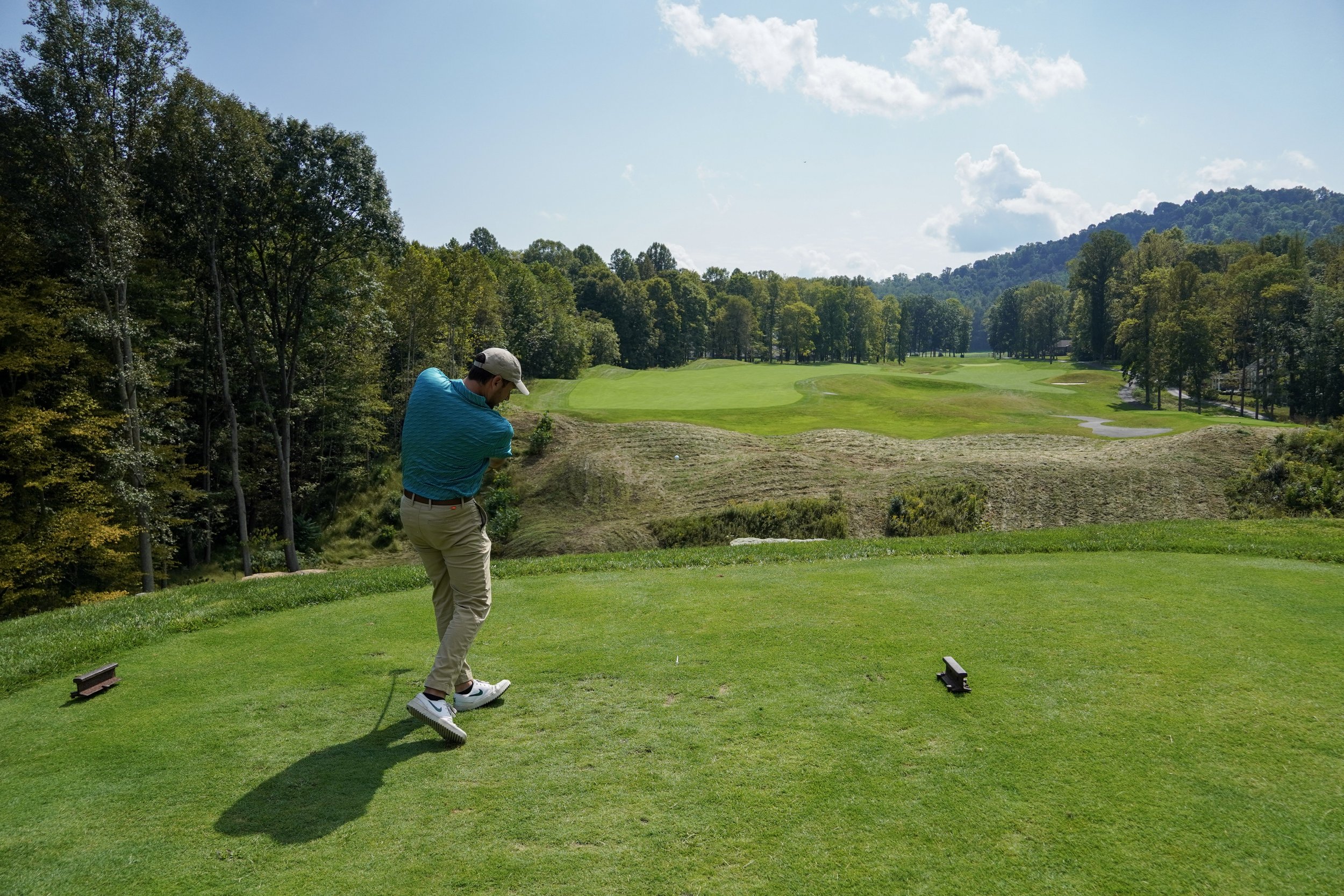
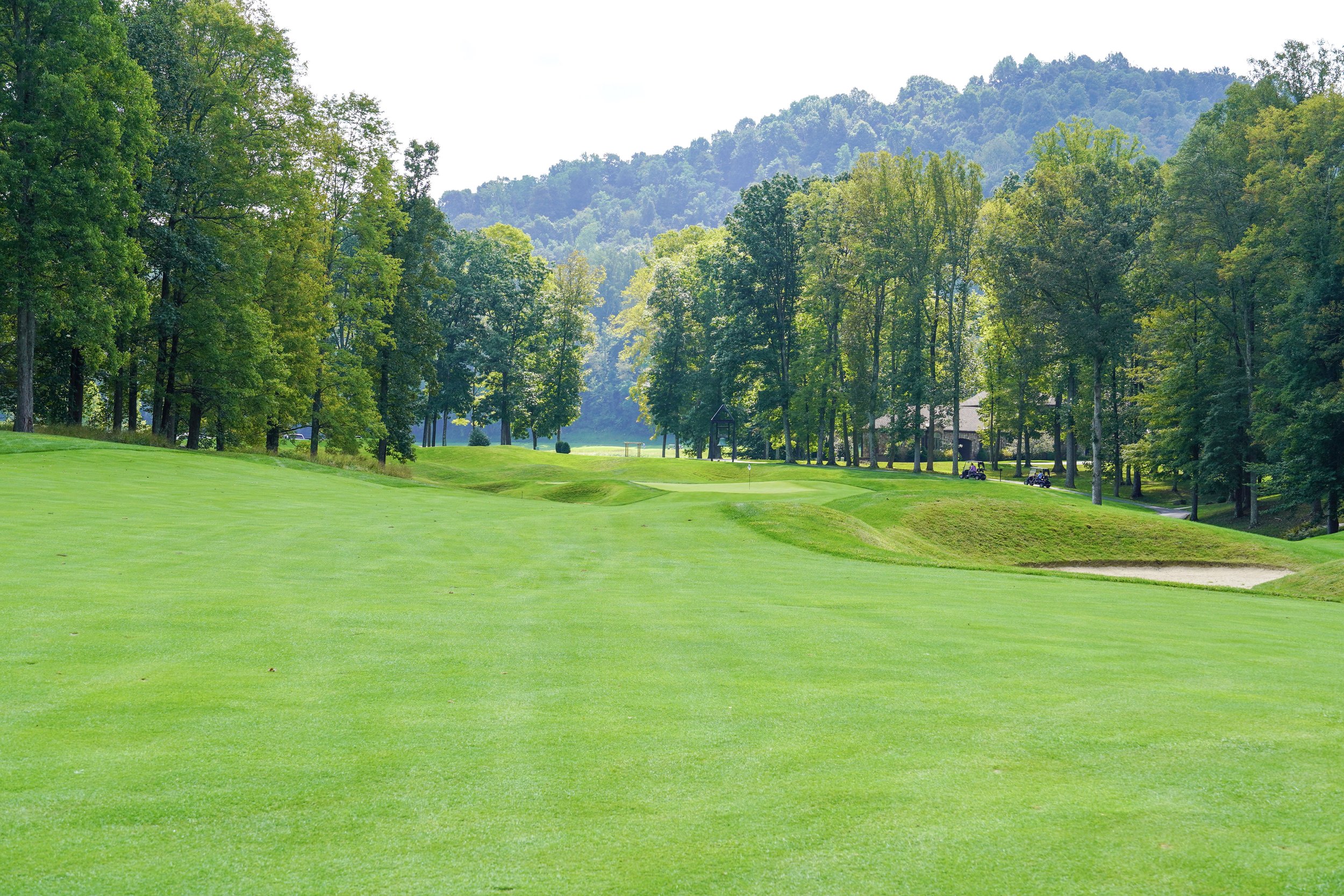
The 10th hole brought another risk-versus-reward opportunity. For a golfer with an uncontrollable slice, playing it safe would have been the right choice. But again, I chose the riskier route and donated another ball to the water. This sweeping fairway required an accurate tee shot that could set up a routine second. If you attempted to cut off too much of the hole, a par became nearly impossible.
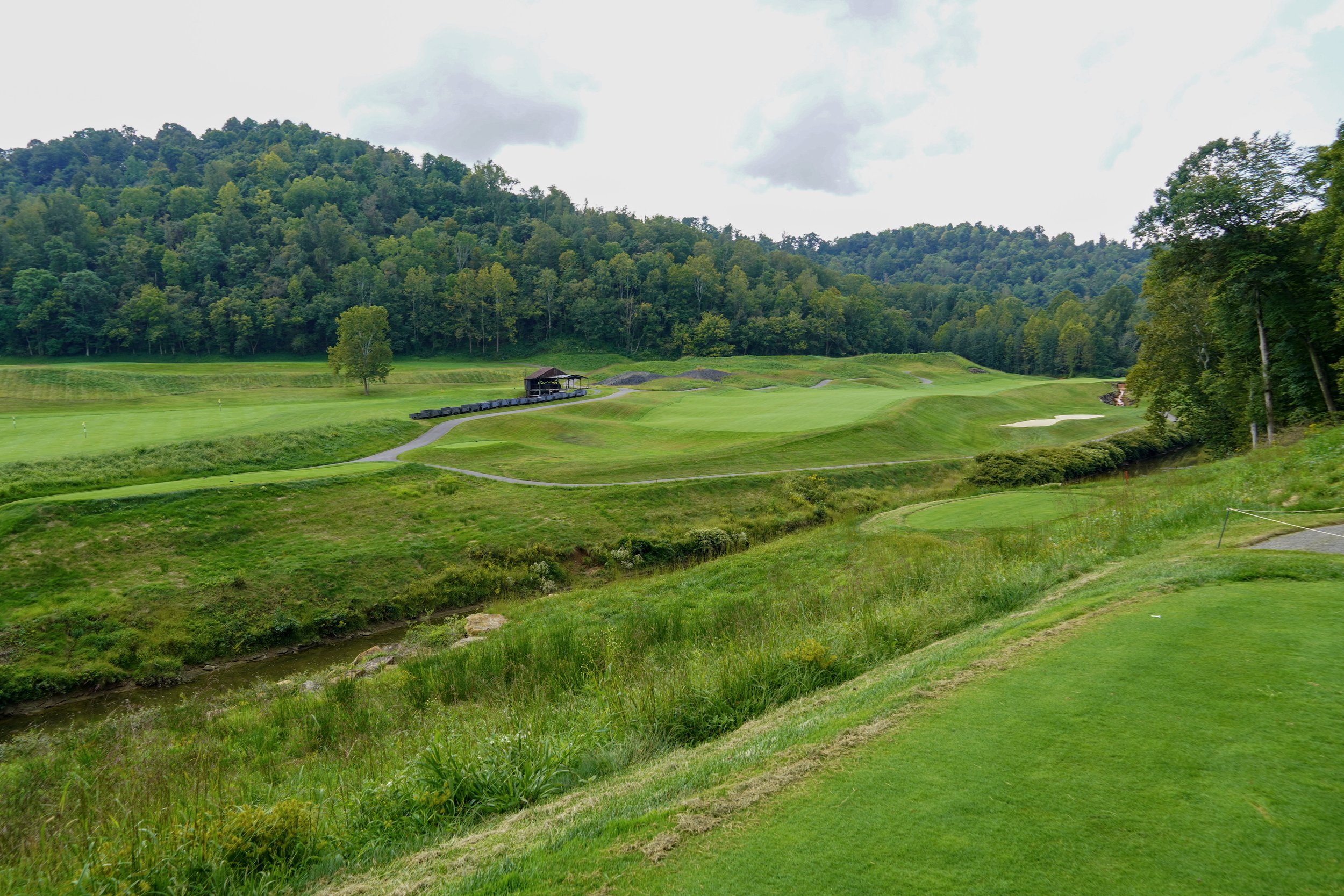
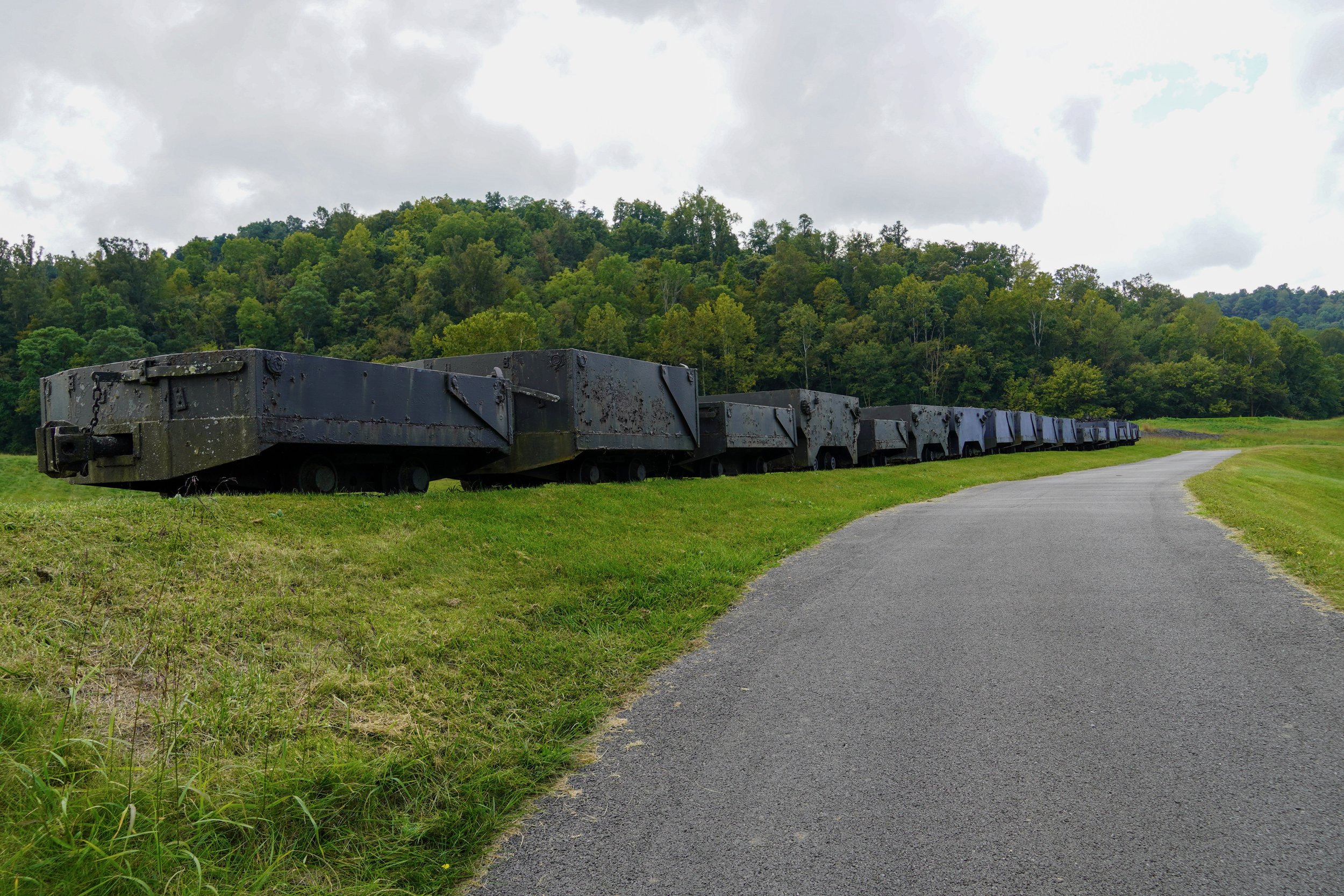

The par-5 11th required three precise shots to set up a birdie opportunity. The short par-4 12th and par-3 13th gave the group an opportunity to score. As the 16th and 18th handicap holes, they momentarily stopped the bleeding. With the closing stretch looming, we knew this would be our last chance to score.
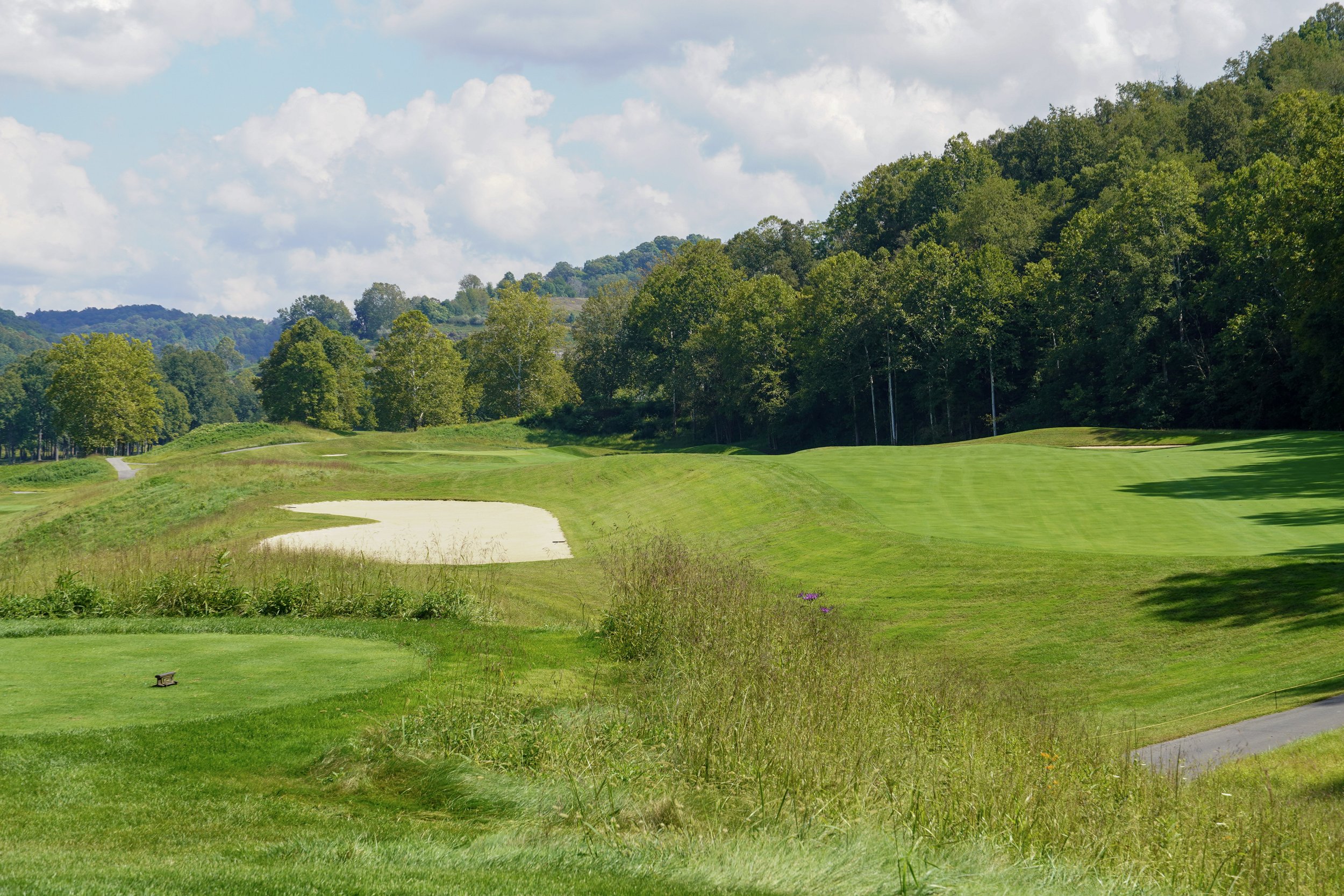

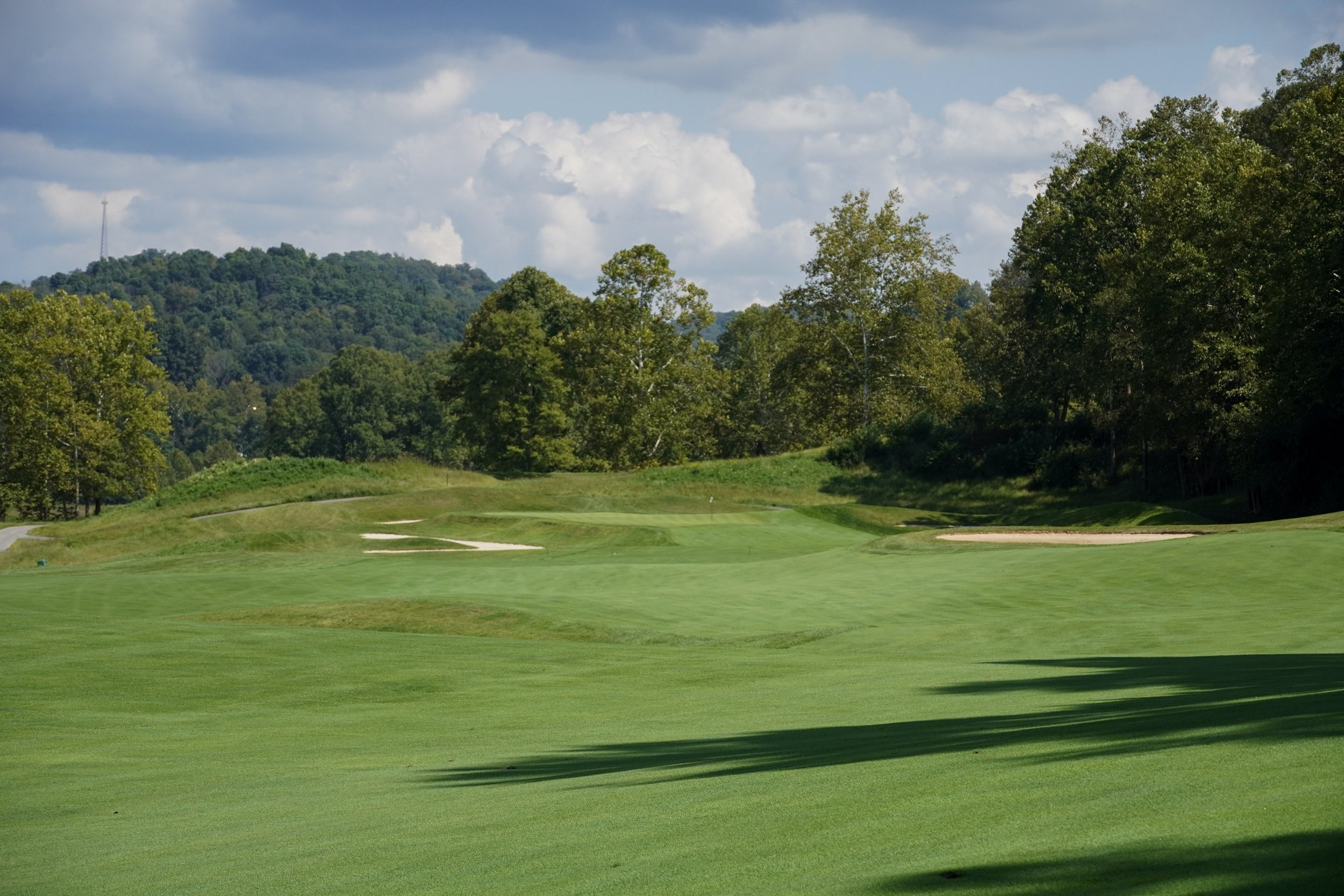
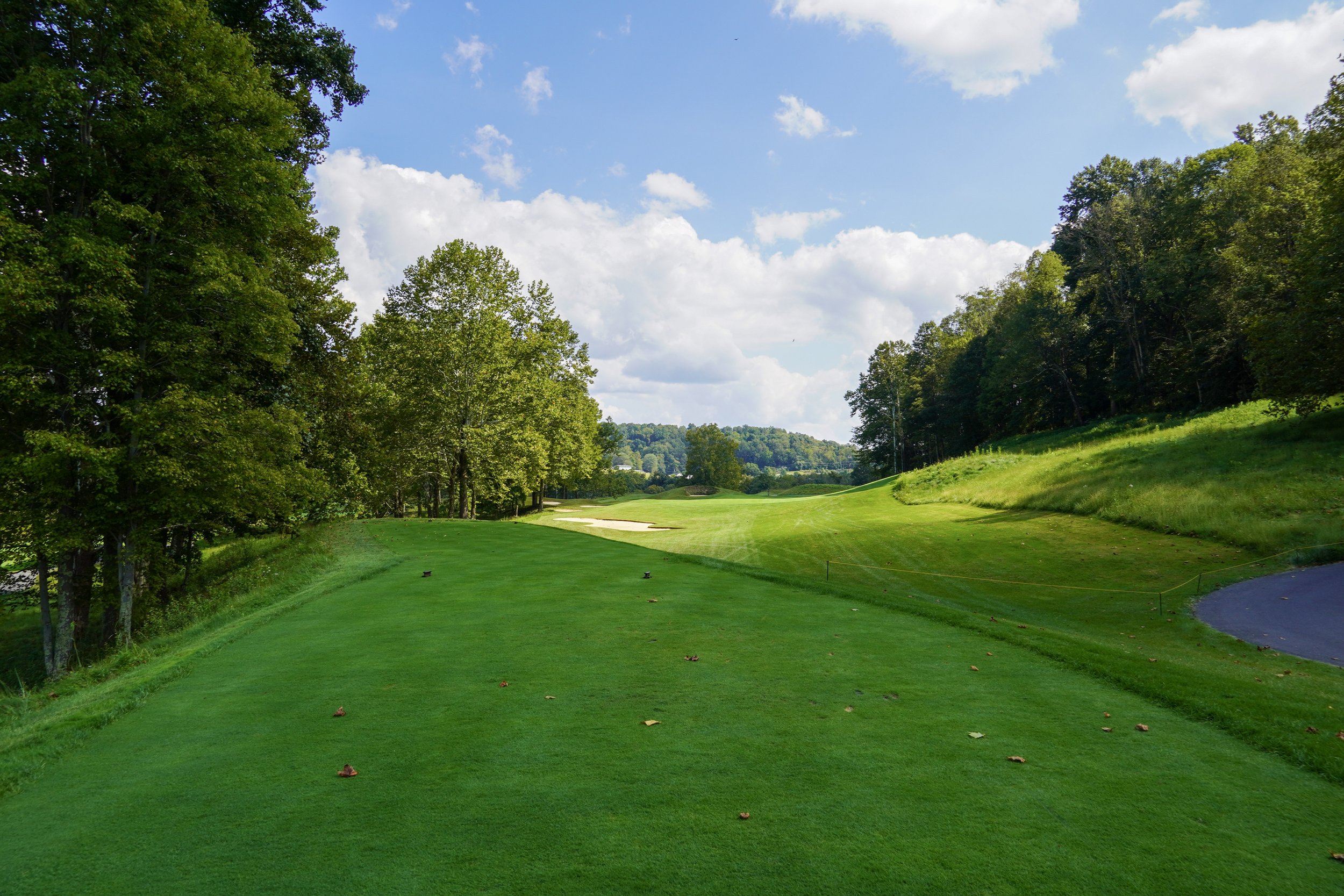
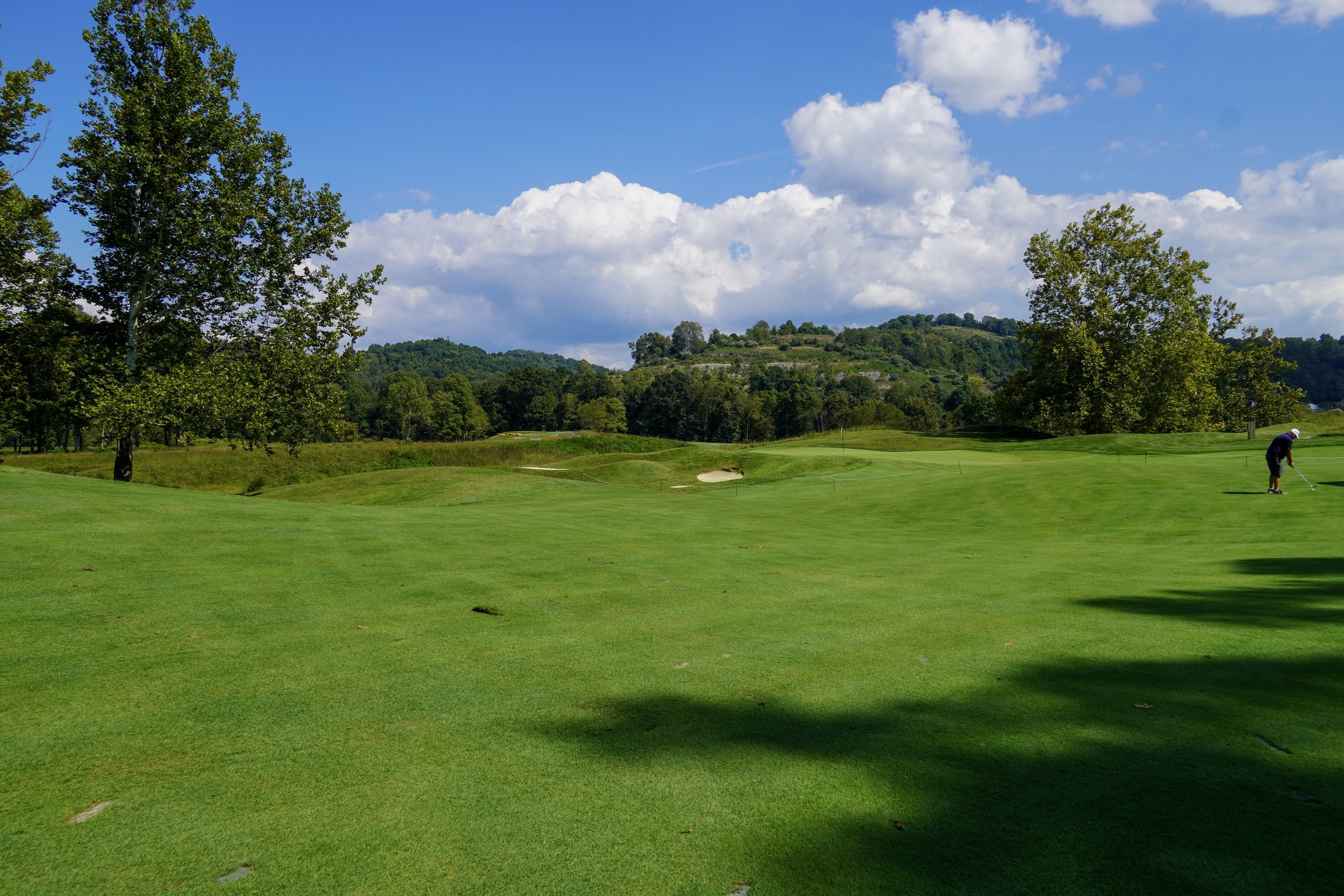
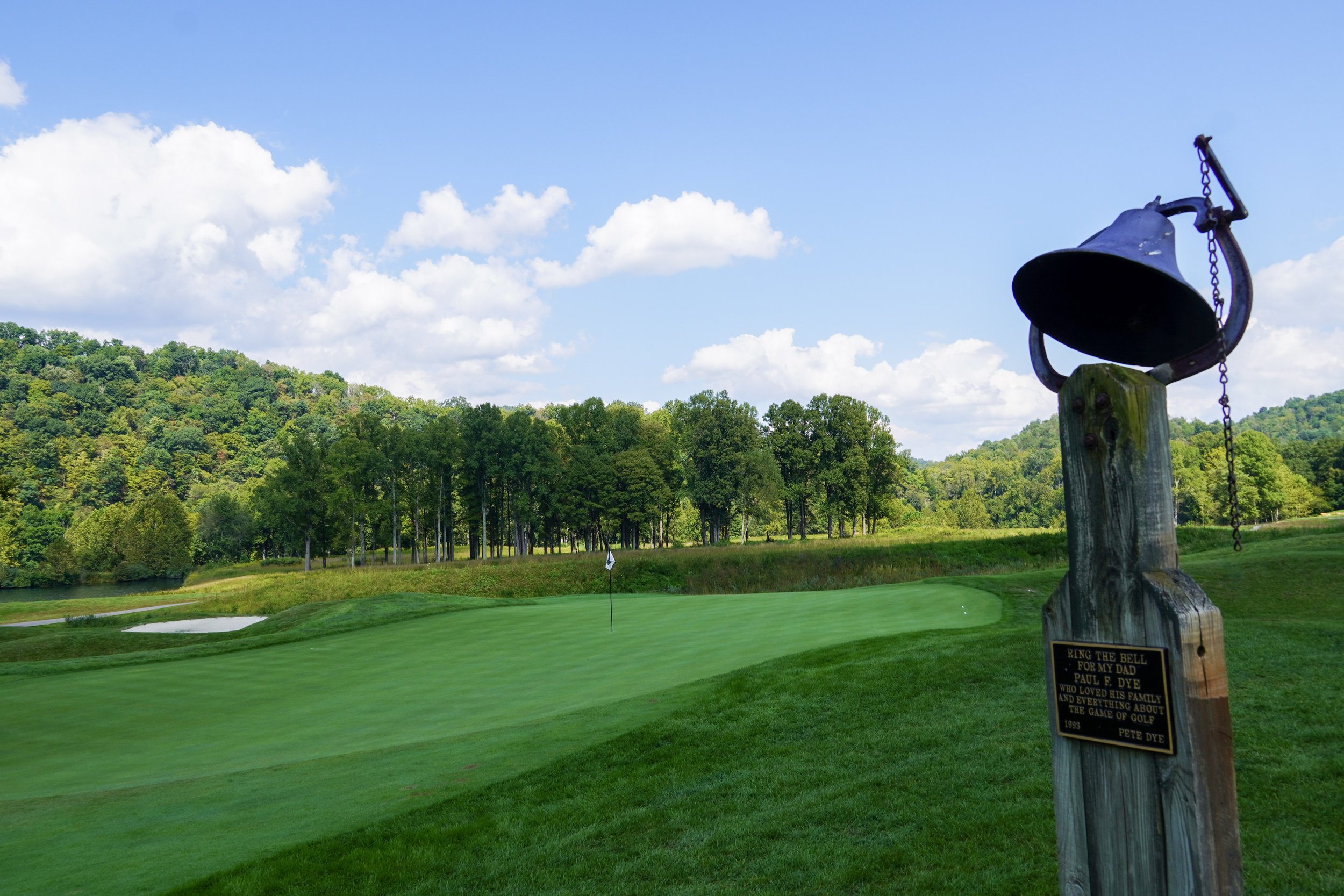
The closing five holes were spectacular. They showcased the stunning West Virginia landscape and were littered with bunkers, water, and tight greens. It was every bit the test Justin hinted at as we progressed through the back nine.
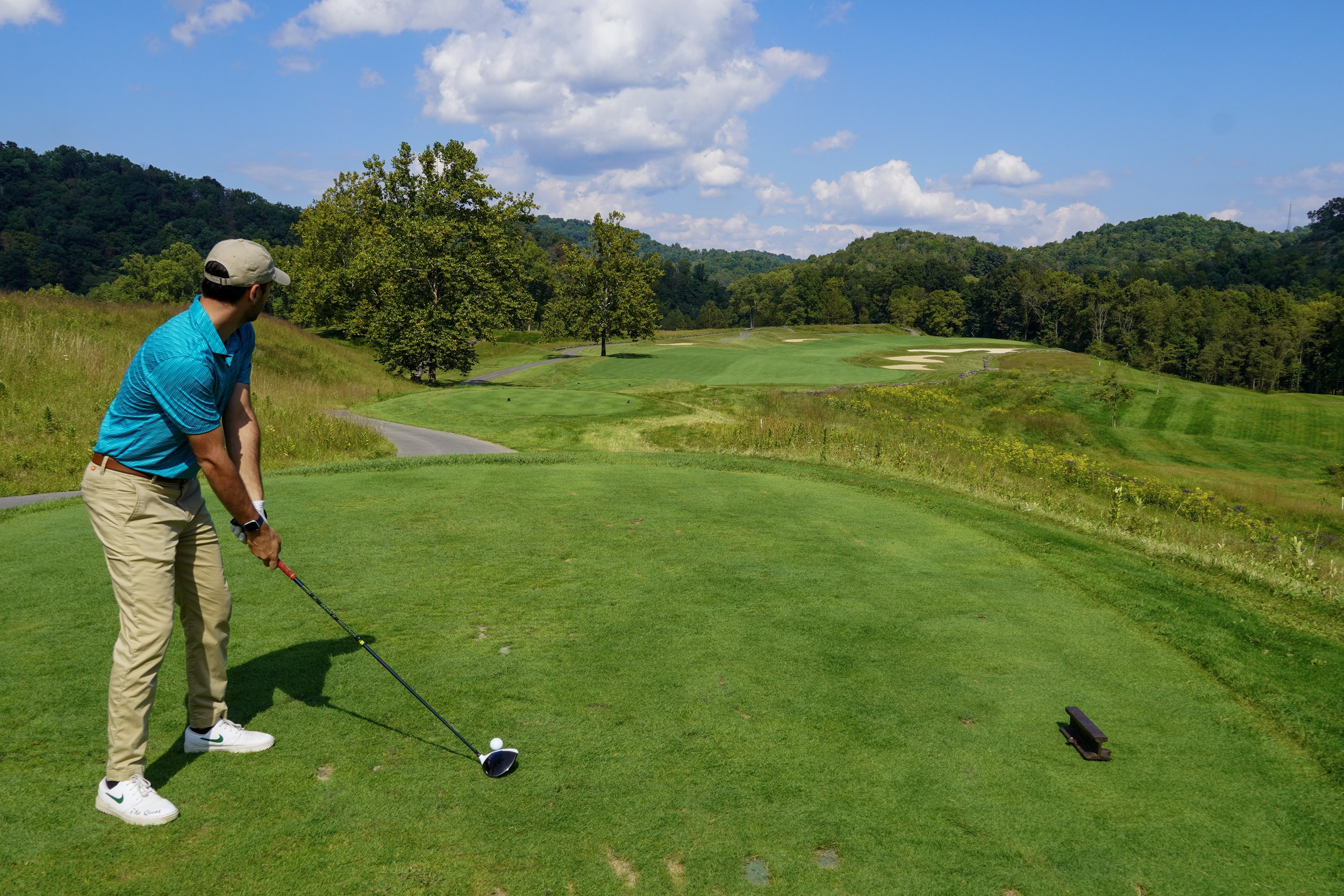
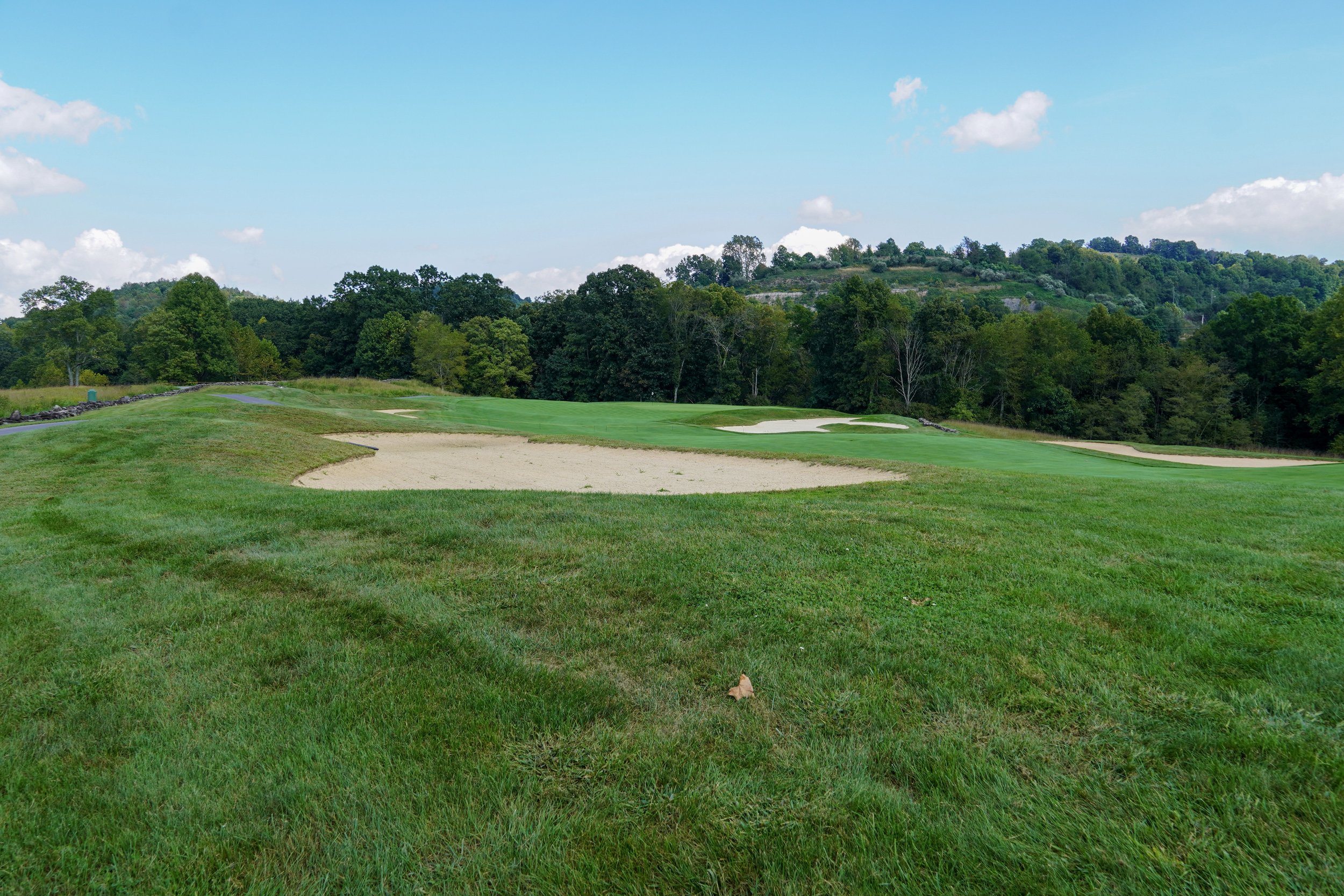
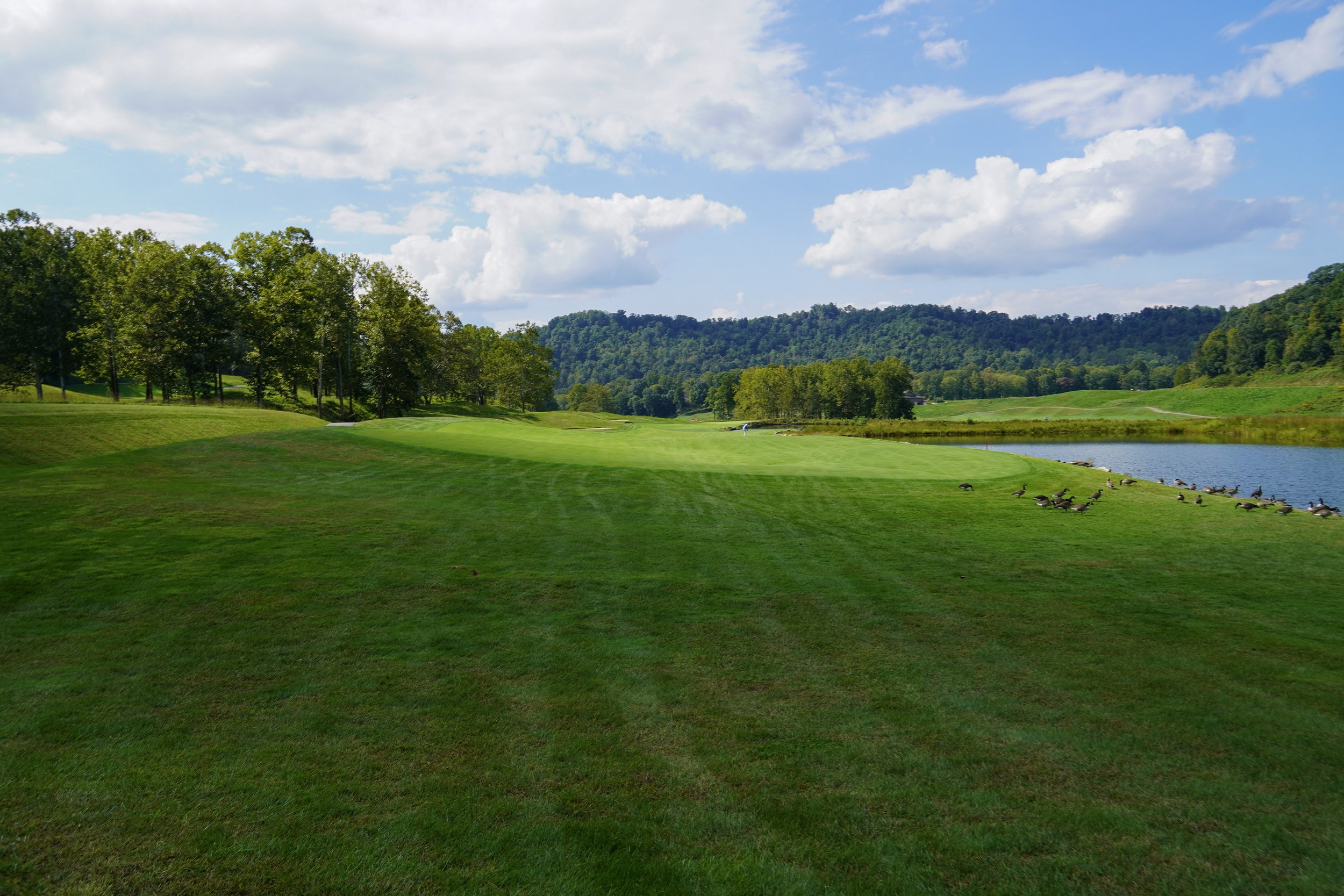
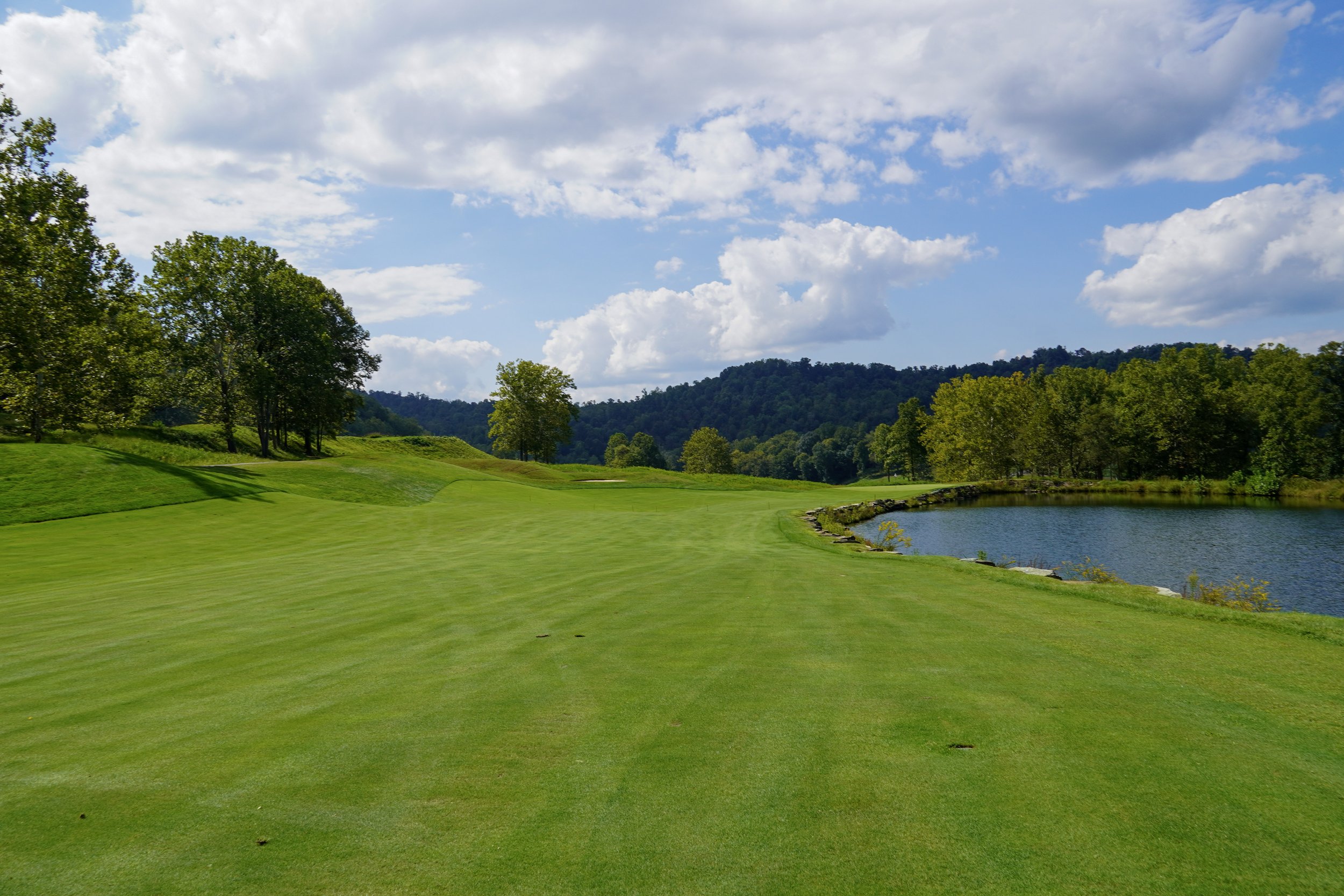
The downhill par-3 16th was a beast of a hole, tipping out at 246 yards—a test for even the longest hitters. It offered no respite in the daunting final stretch. The 17th featured an undulating green that required a pinpoint second shot. The 18th brought yet another risk-versus-reward decision: a right-to-left fairway with a water/waste area on the left. The tee shot needed to be precise, and the green was well-guarded and tucked alongside the river.
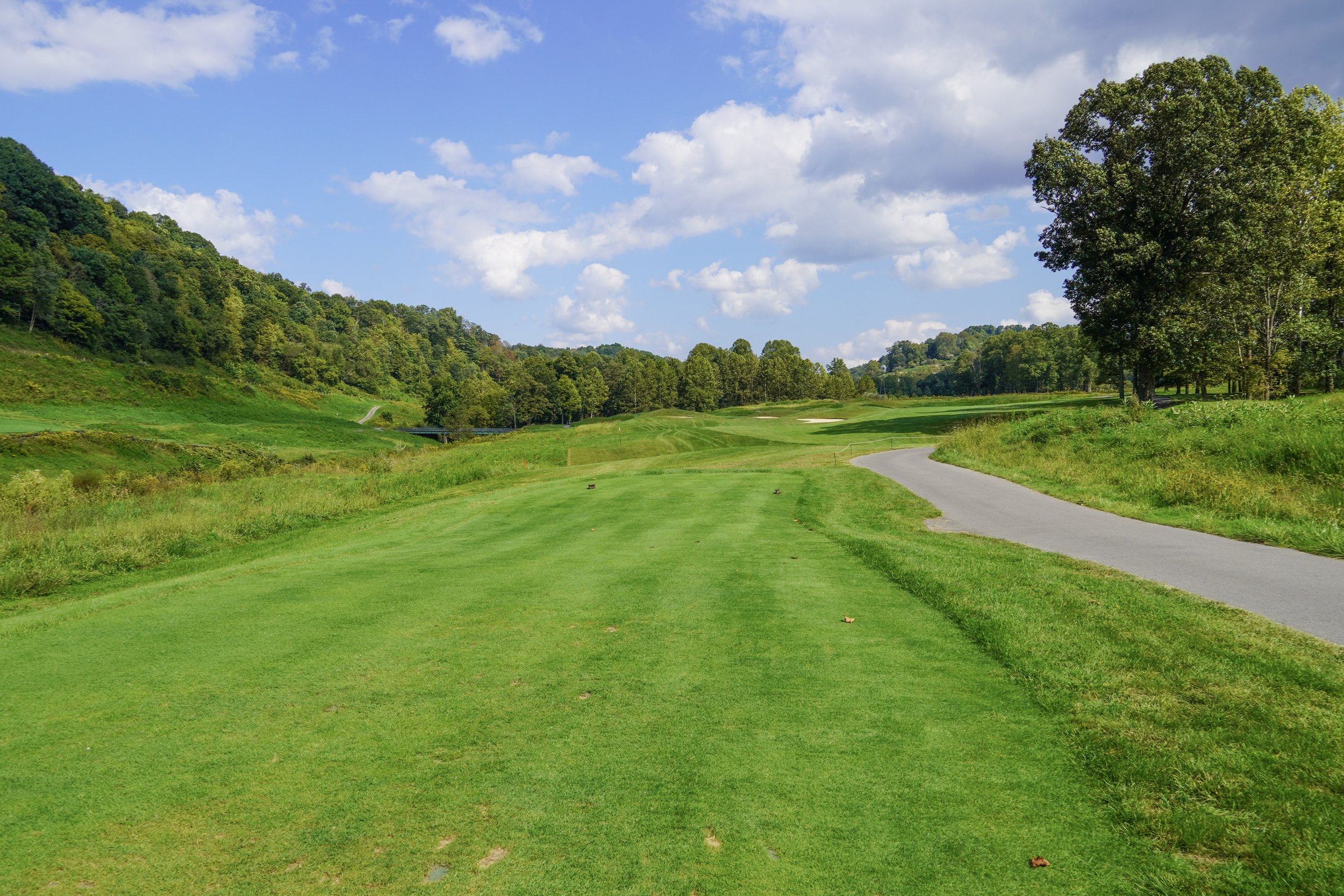
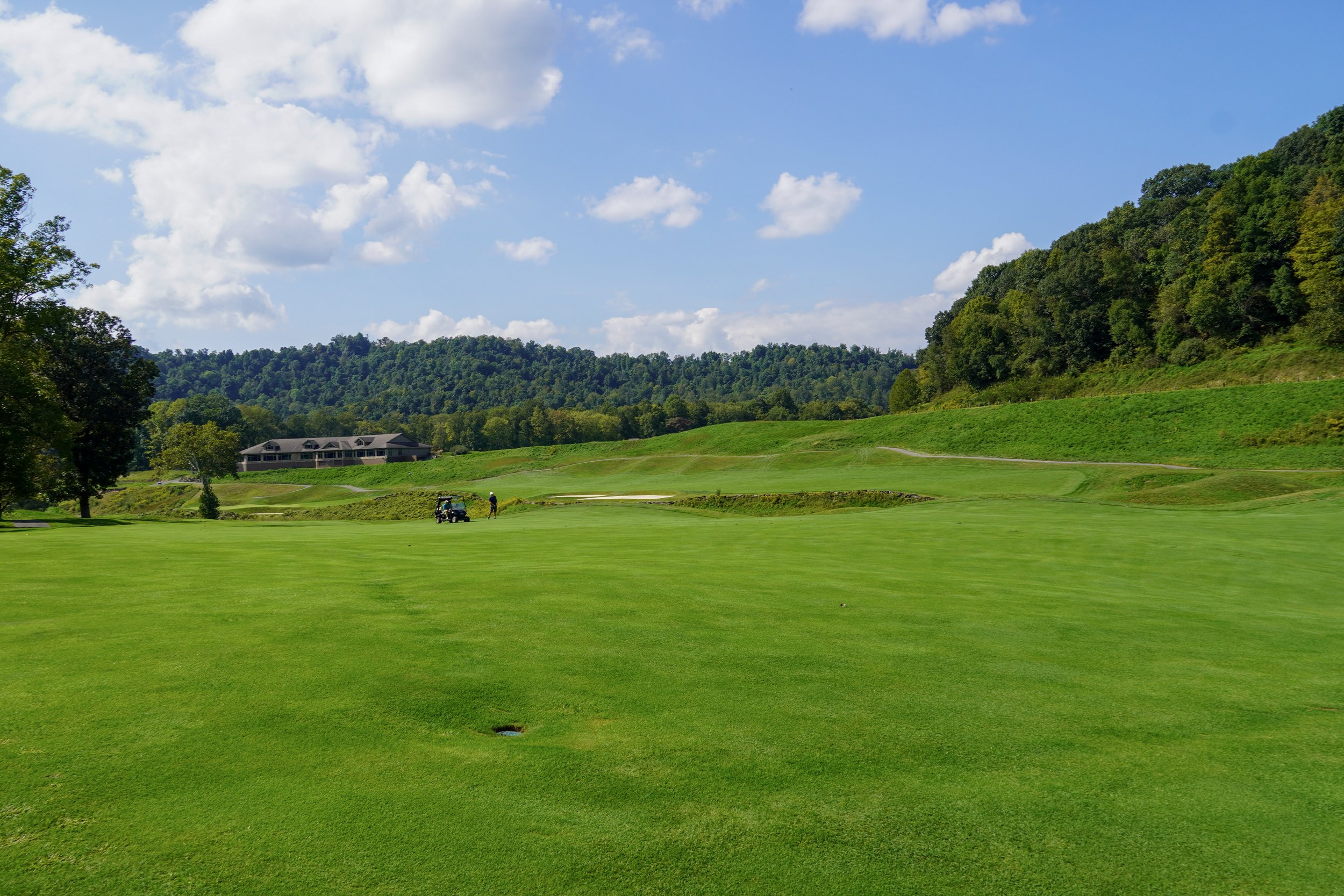
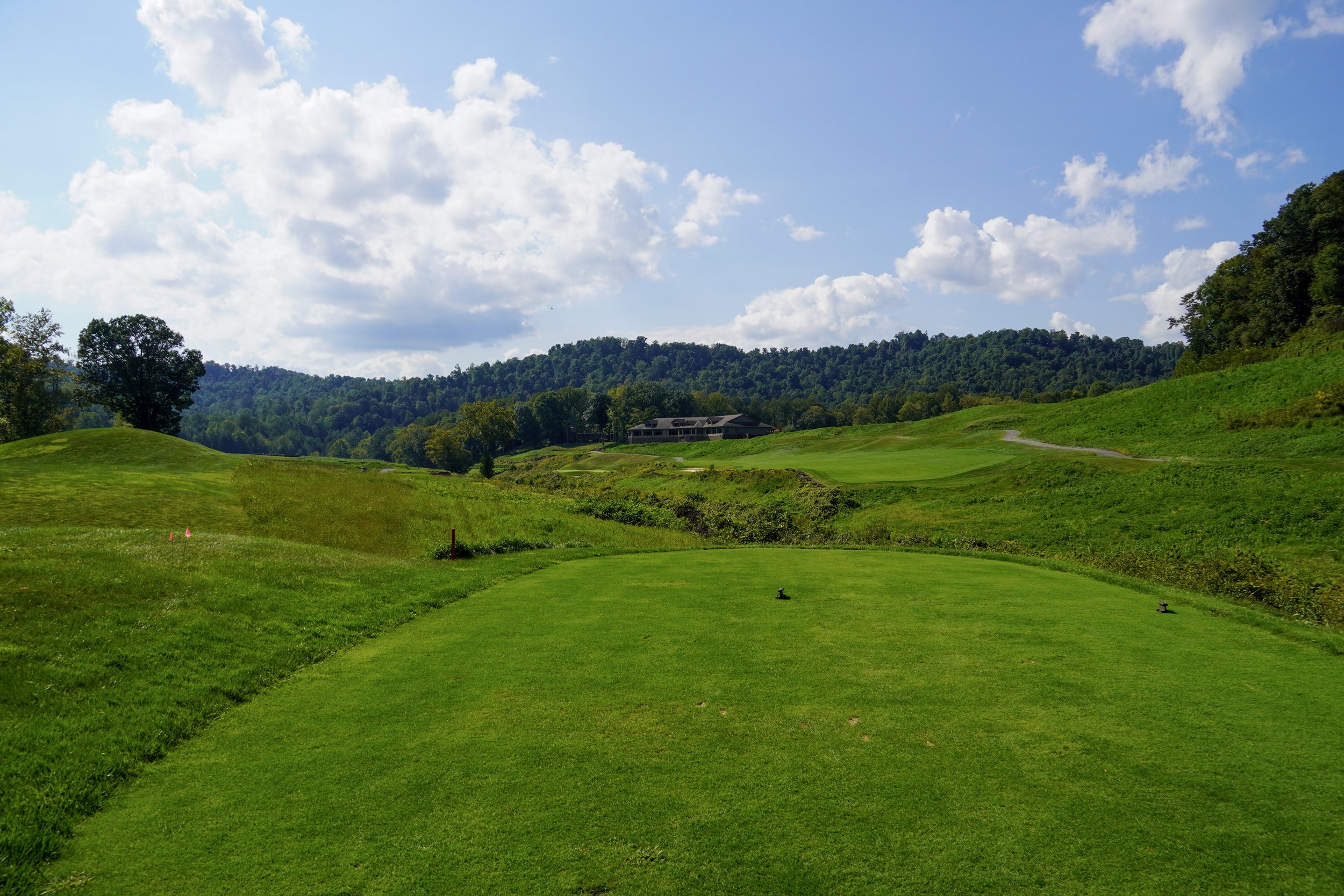
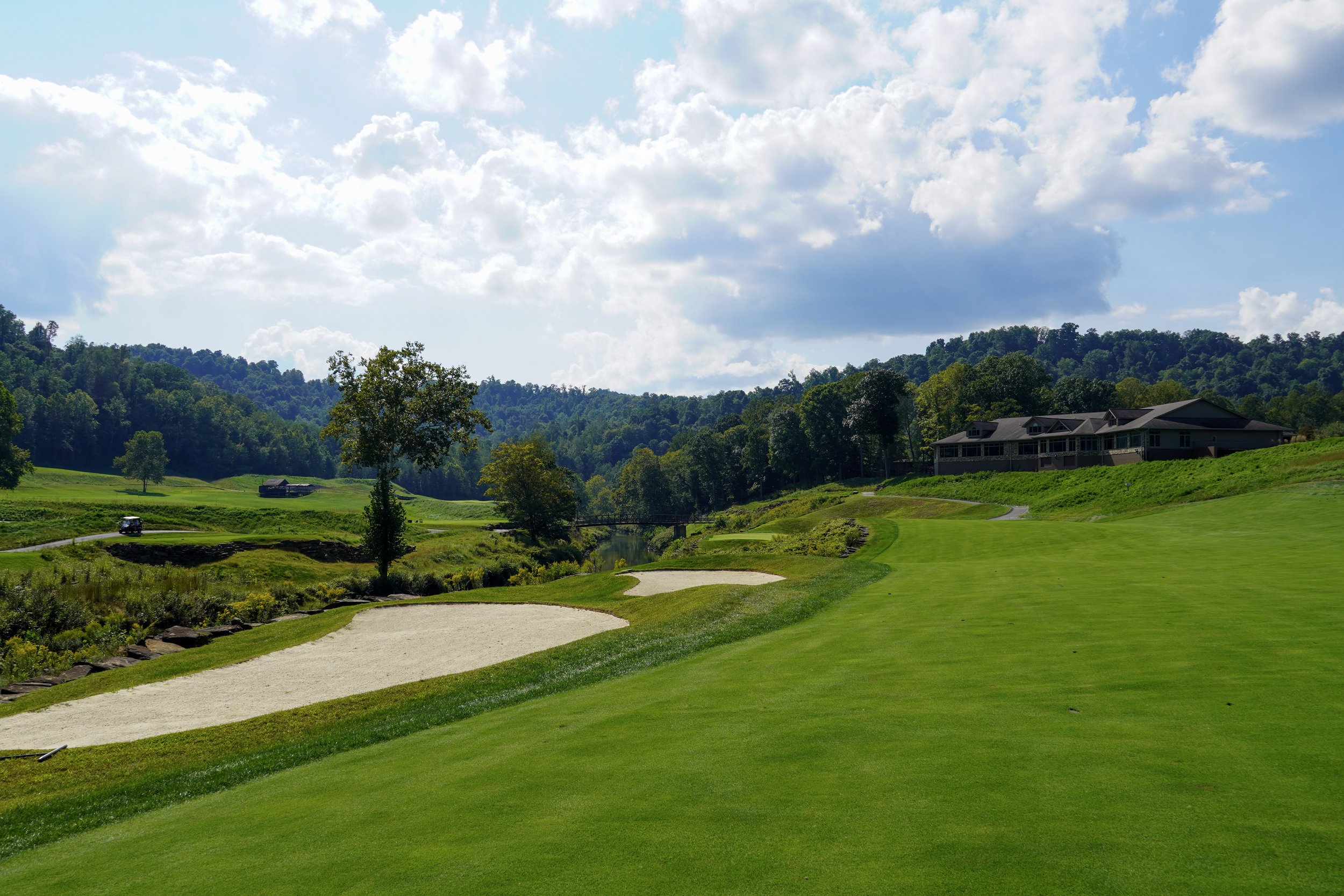
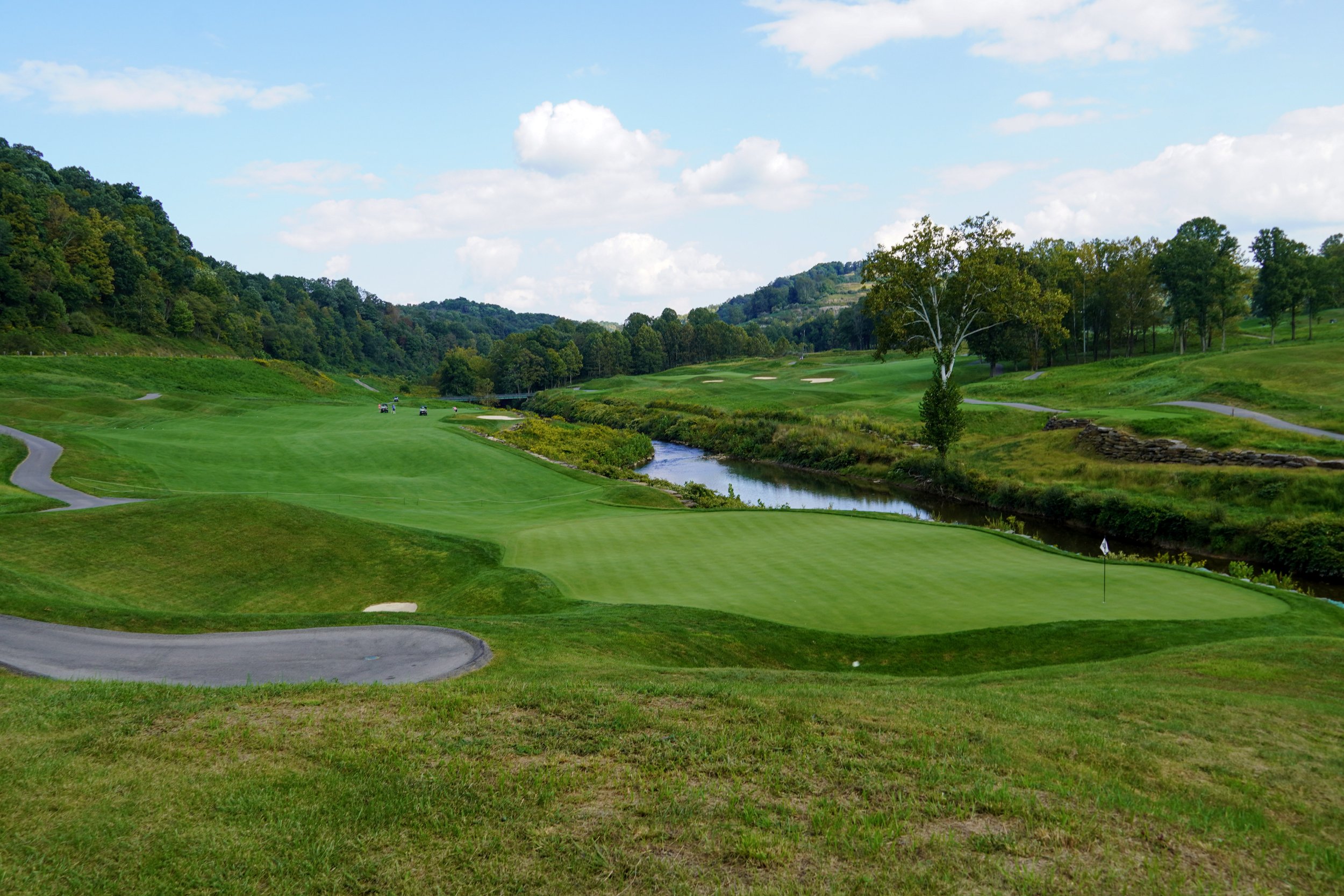
Pete Dye challenged us at every turn. A course riddled with history, it showcased the best of modern golf architecture. Pete Dye Golf Club was an absolute treat.
